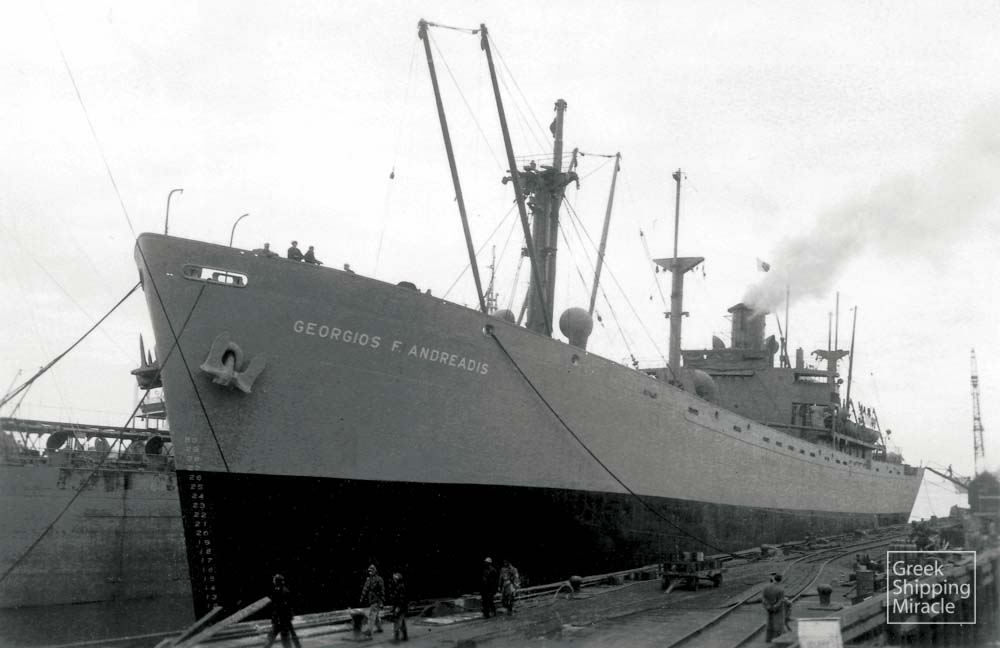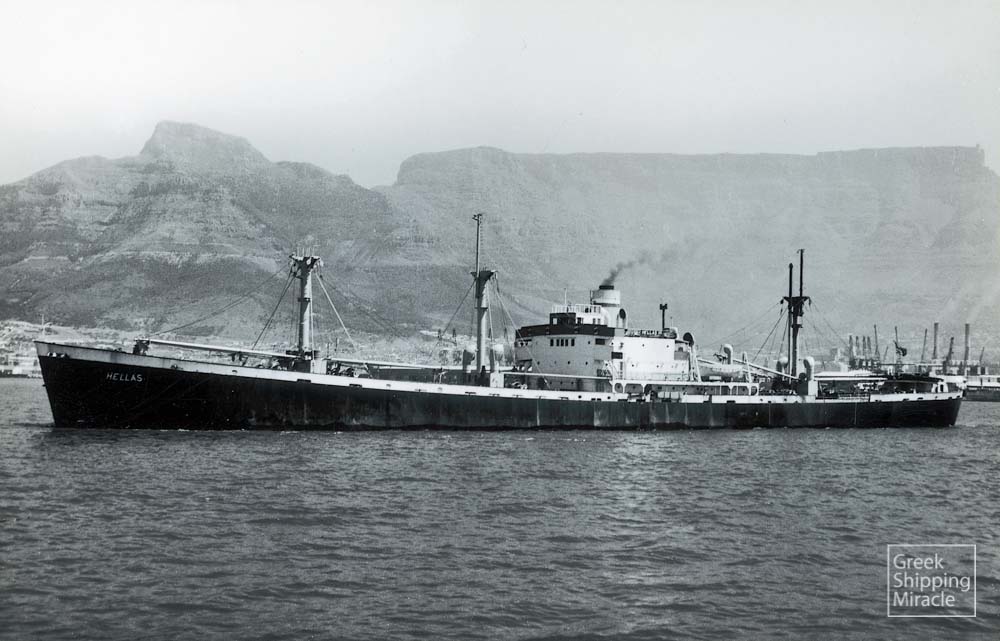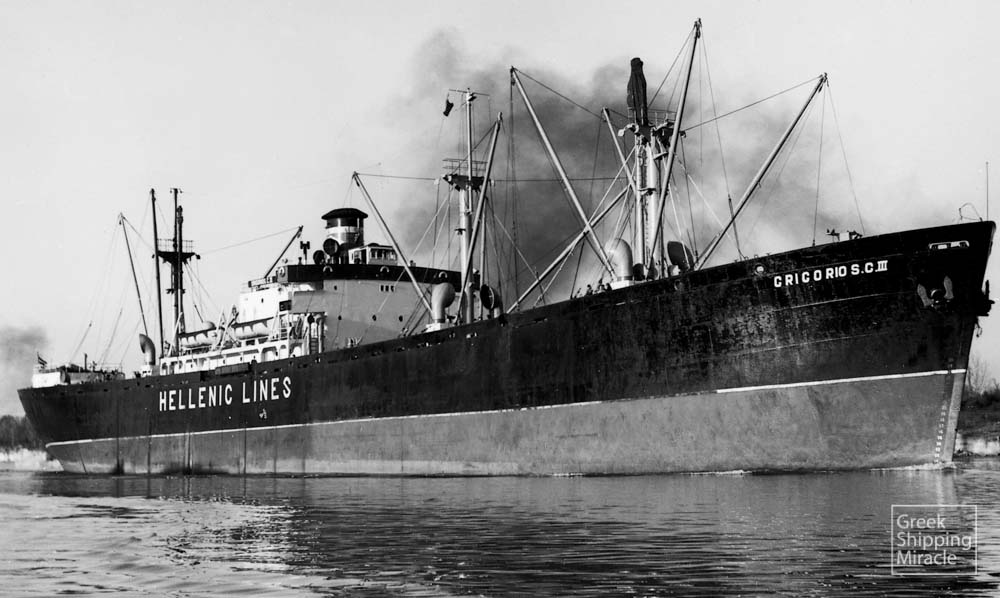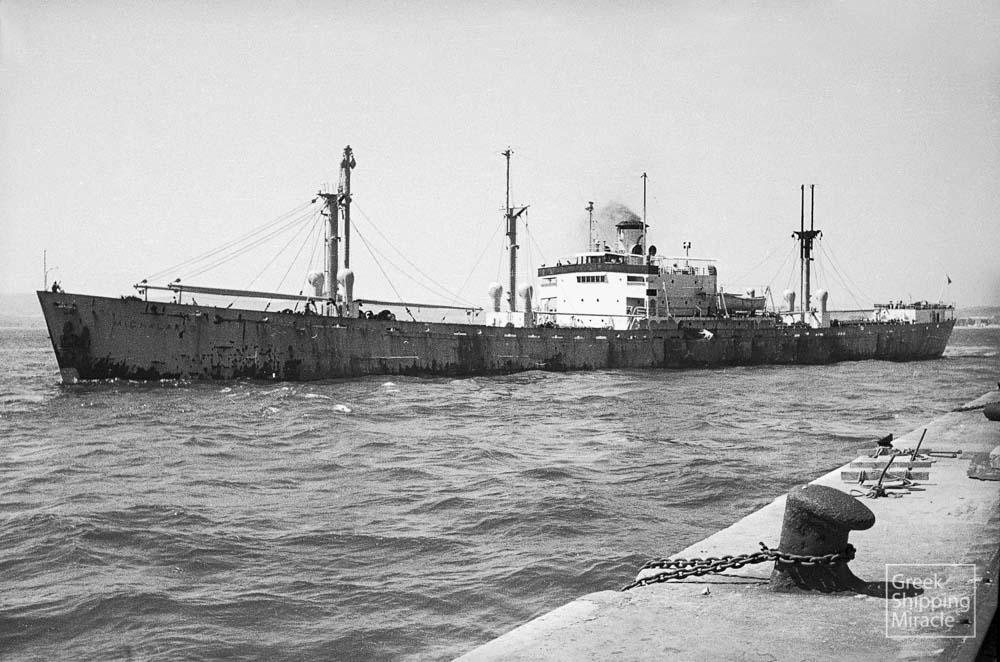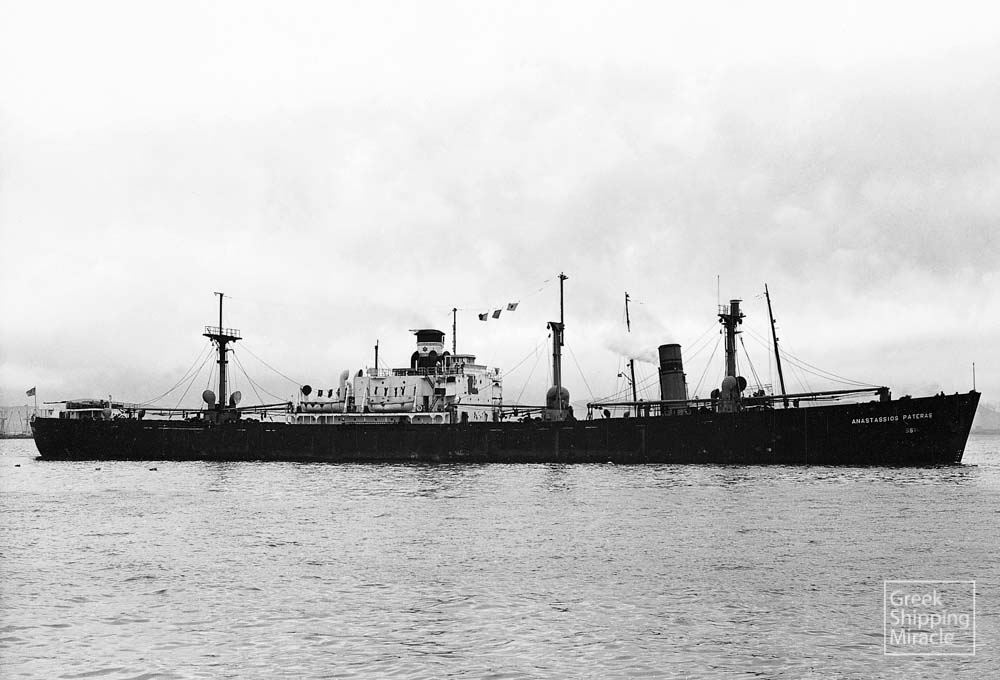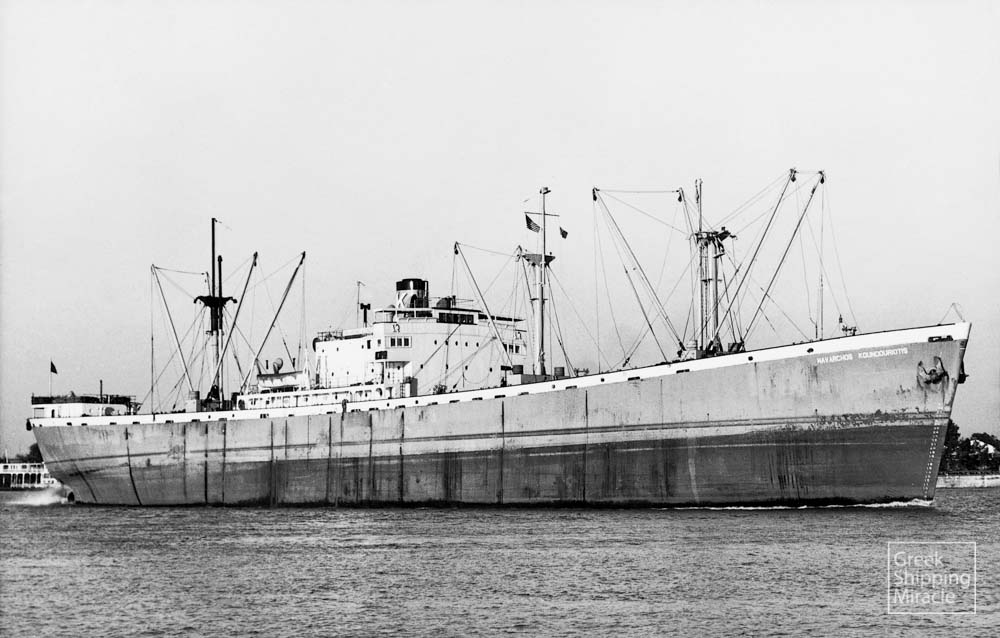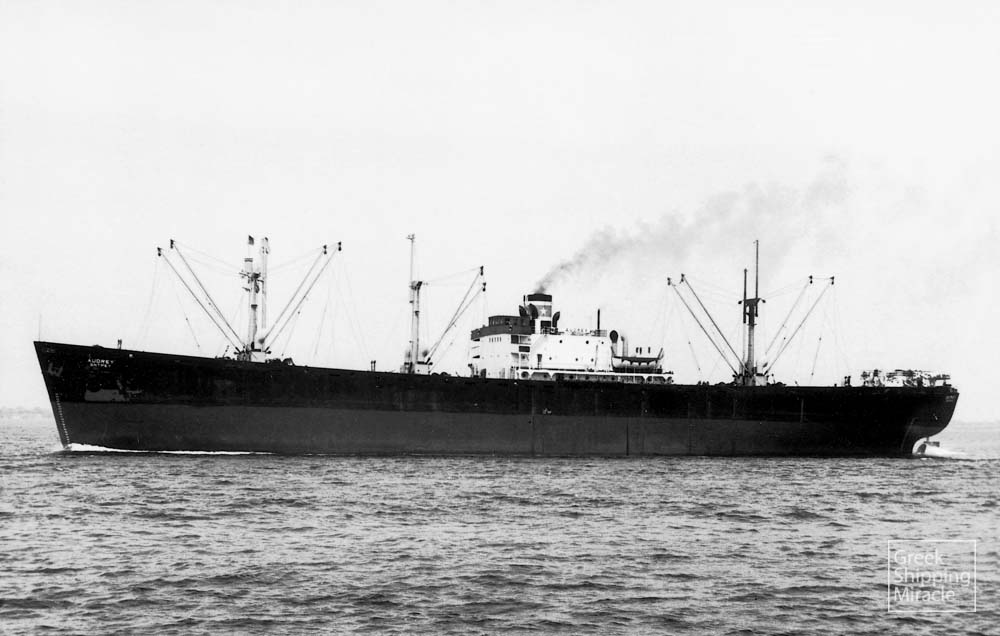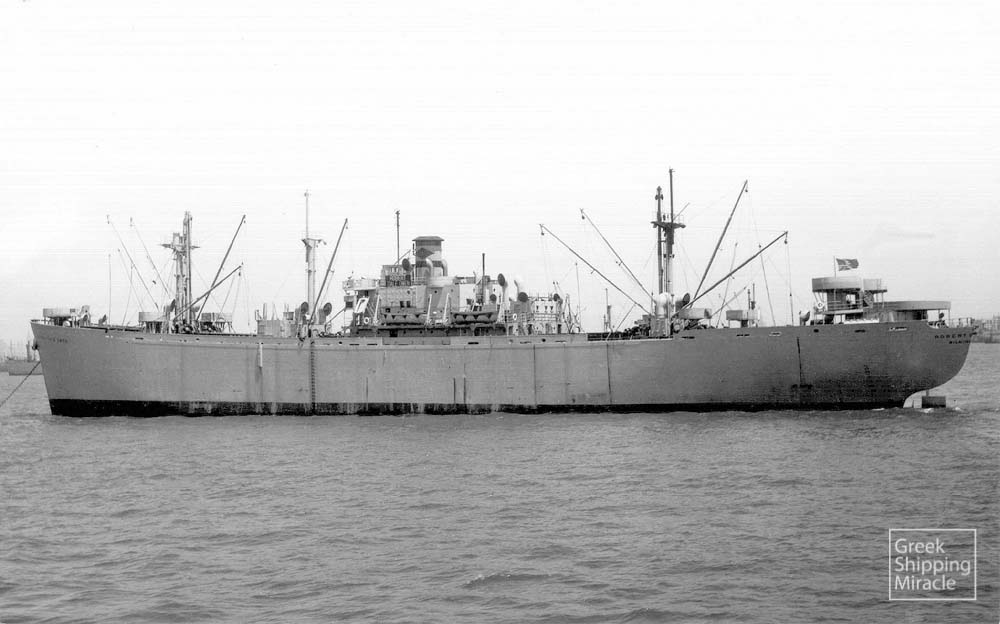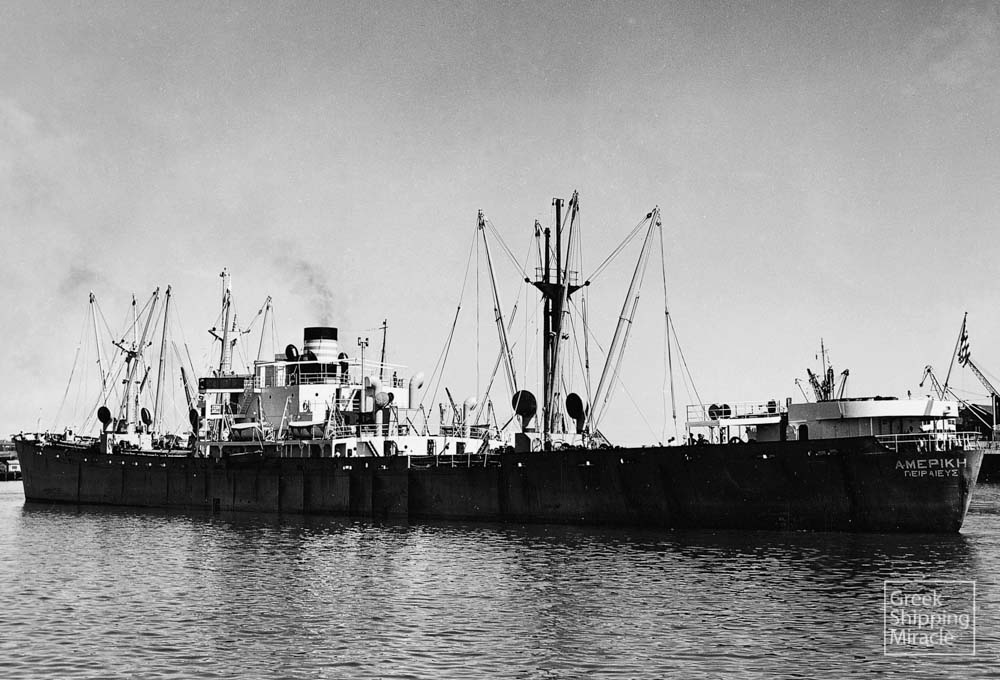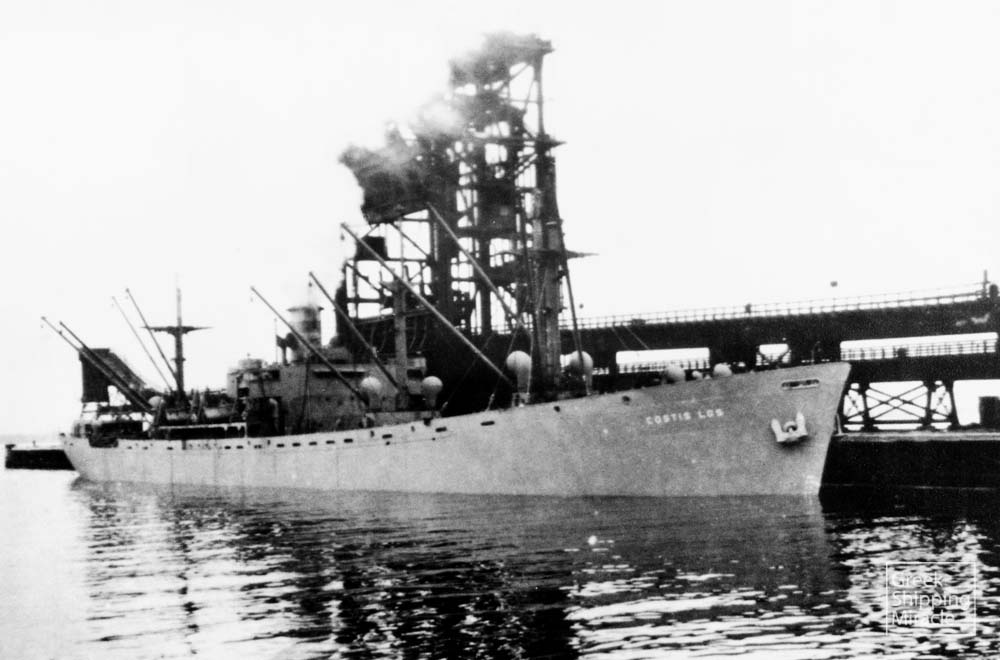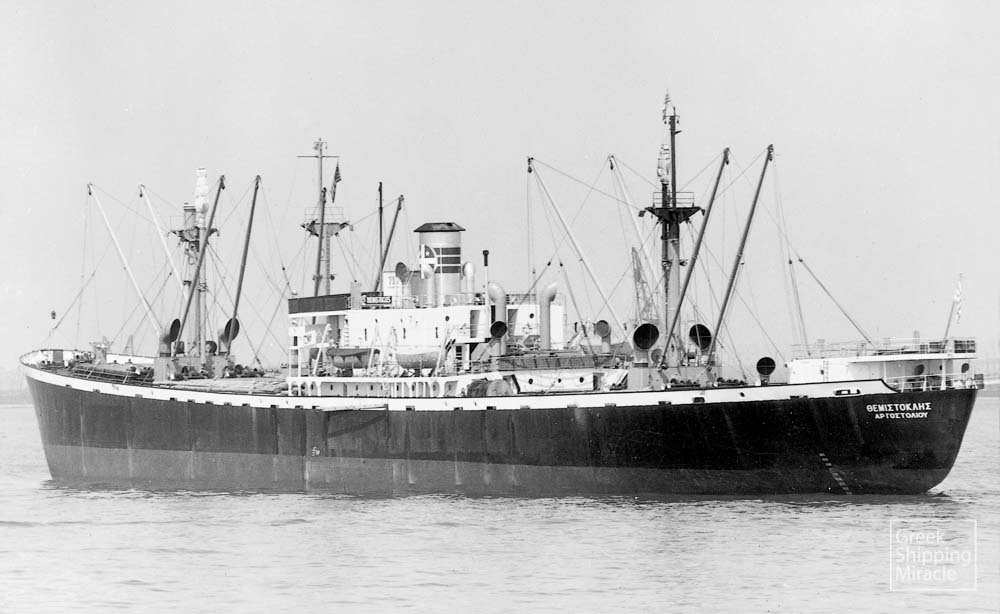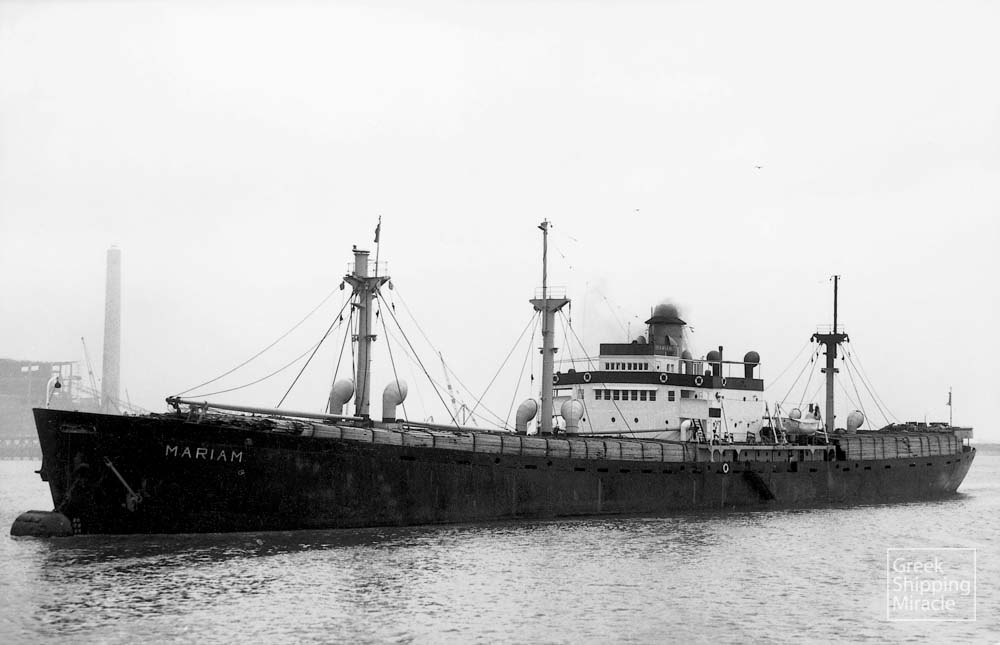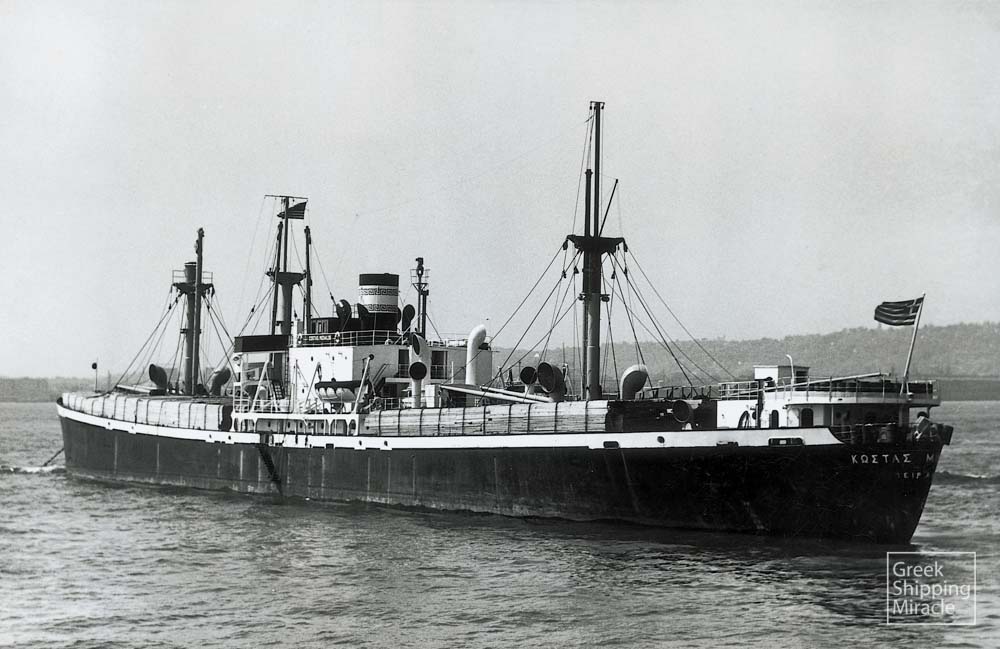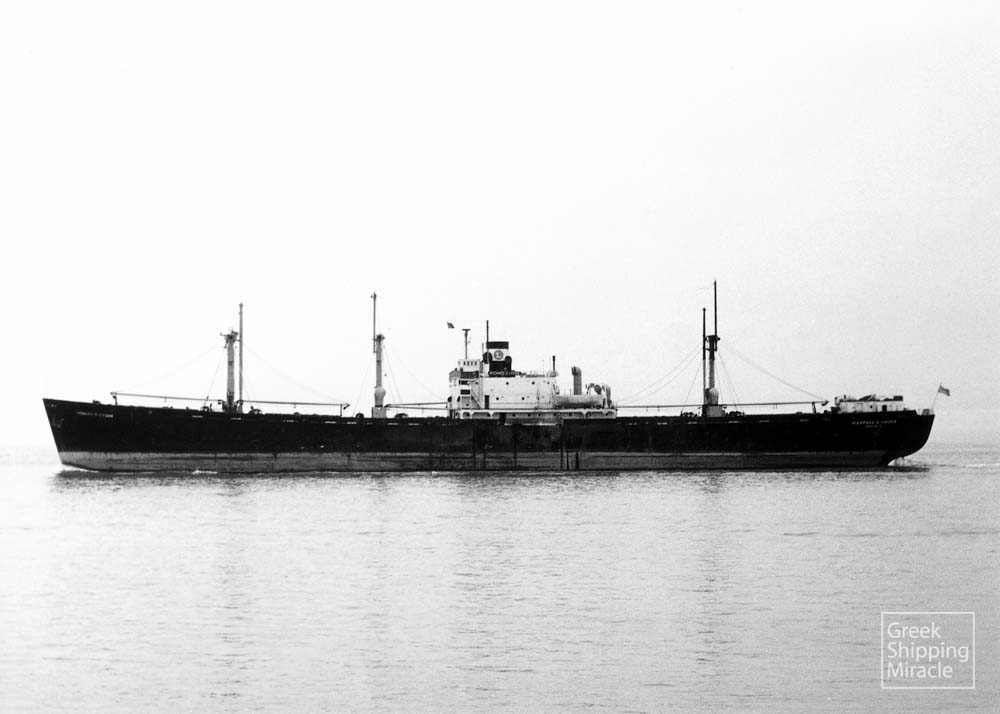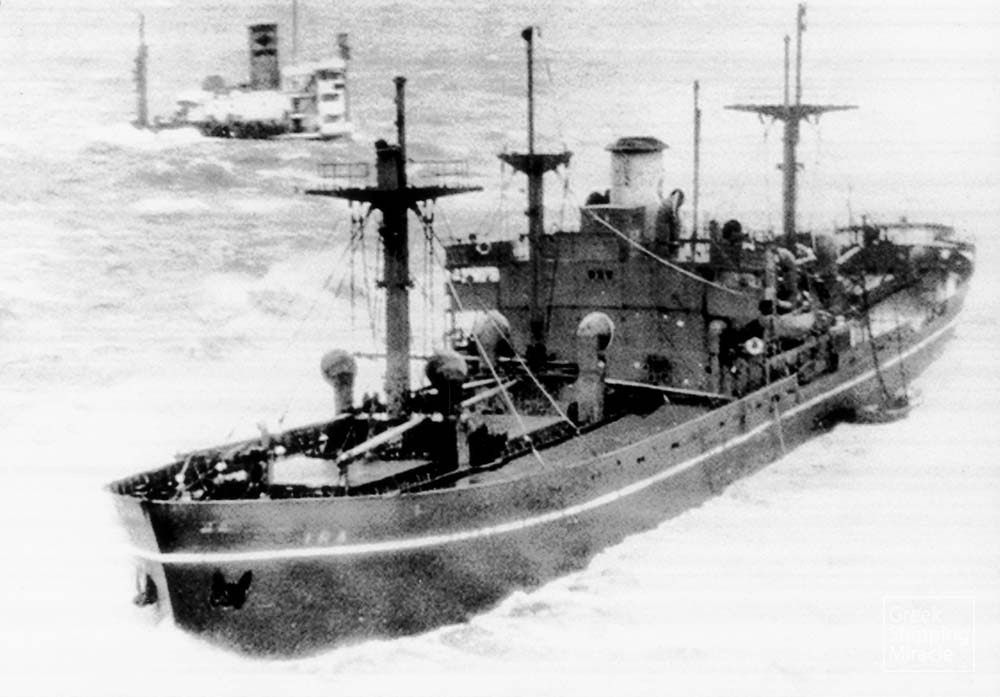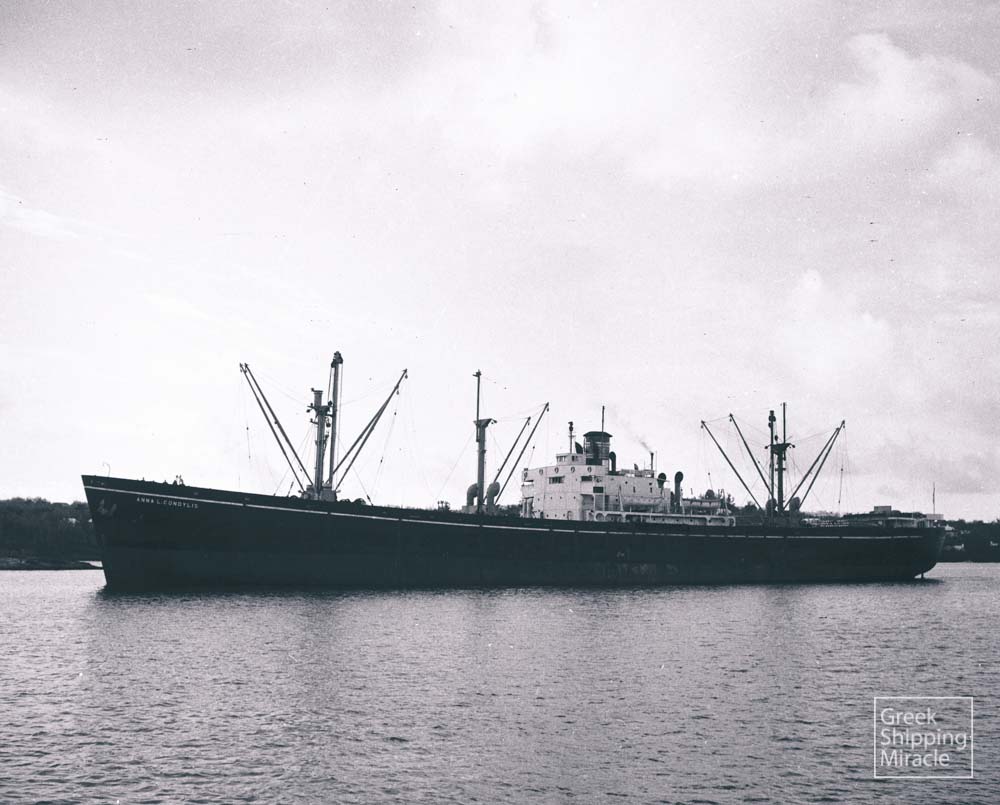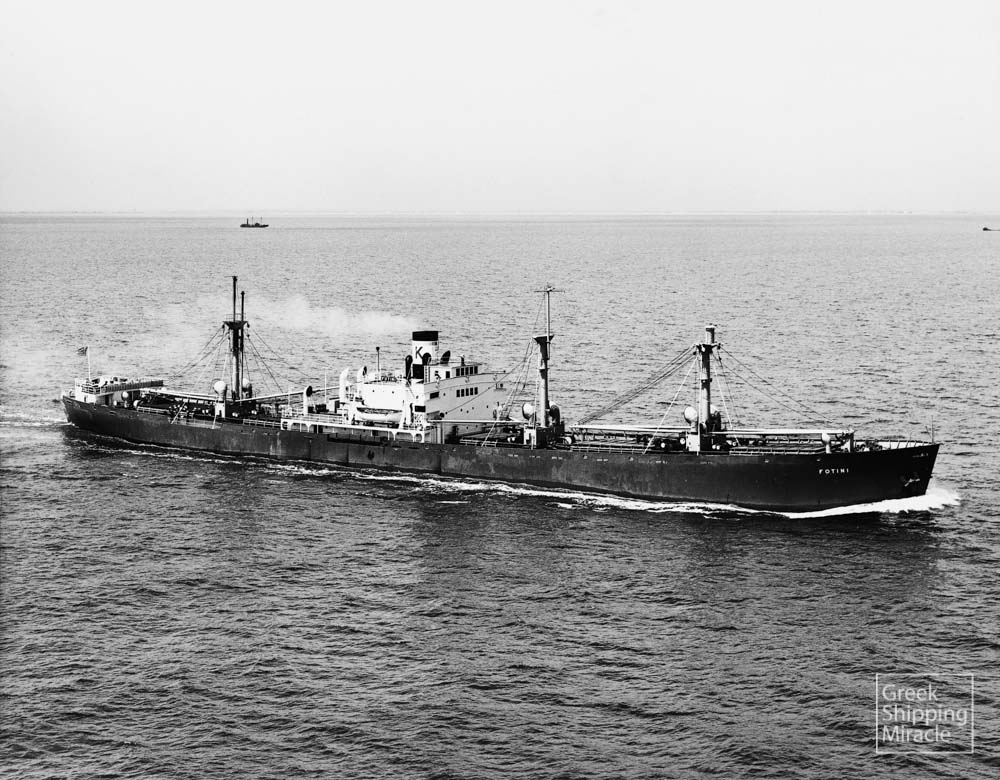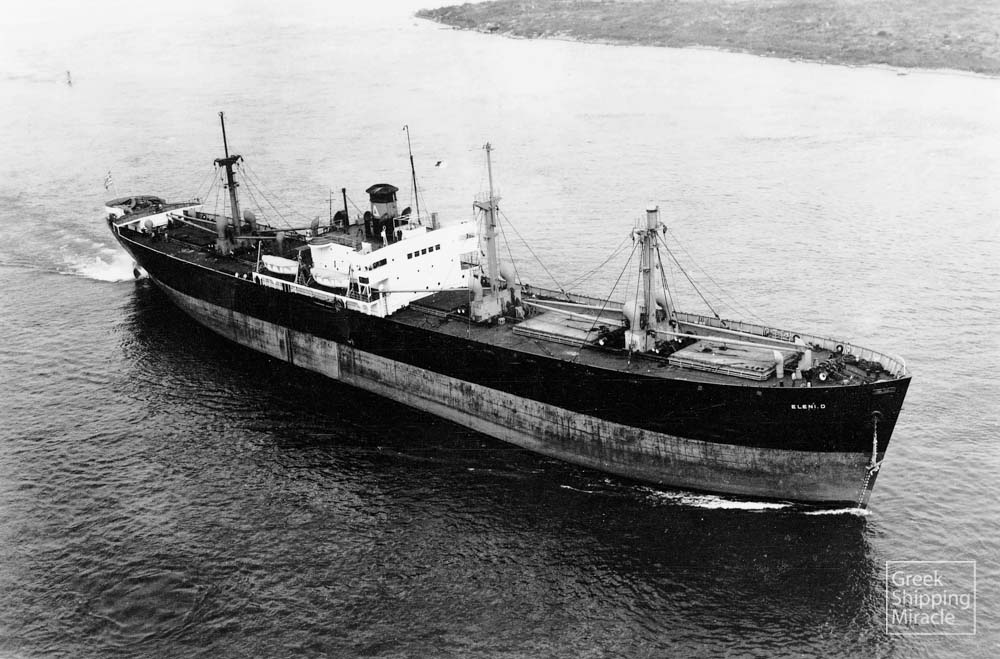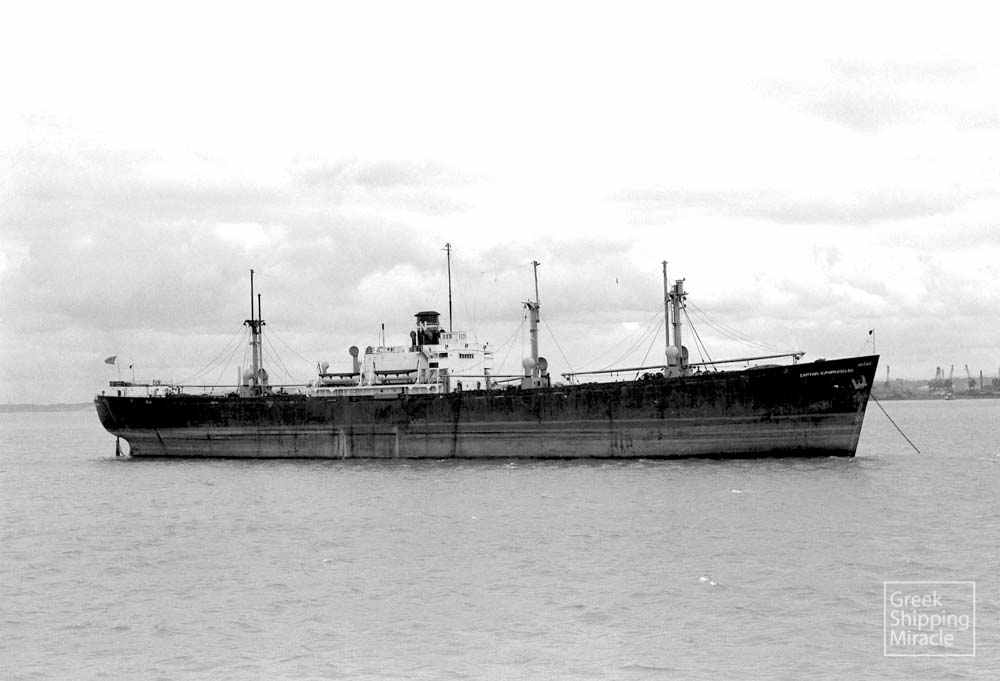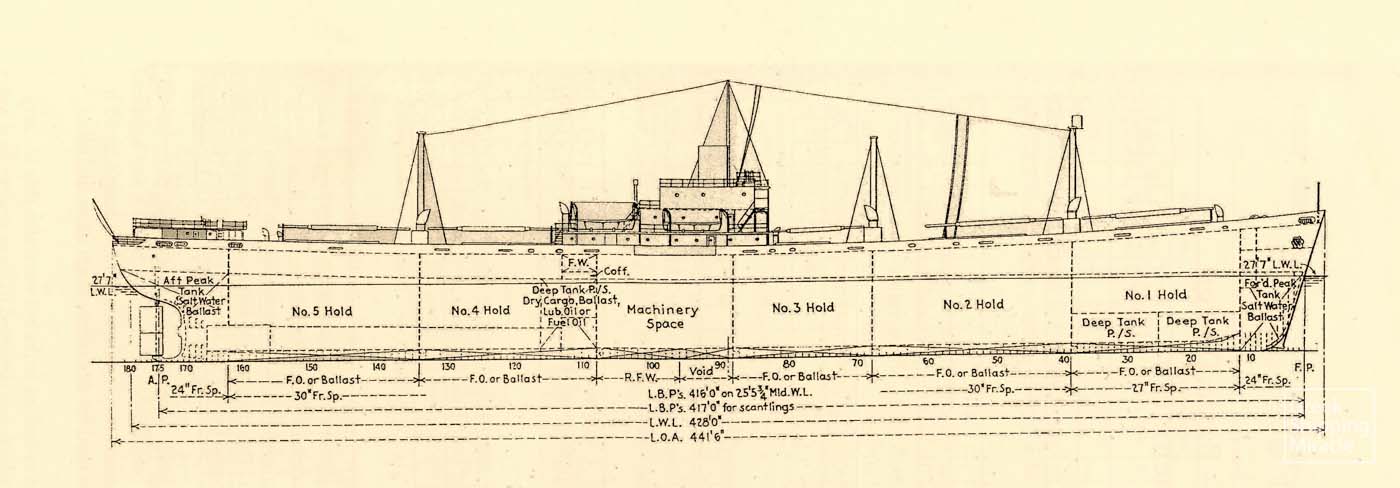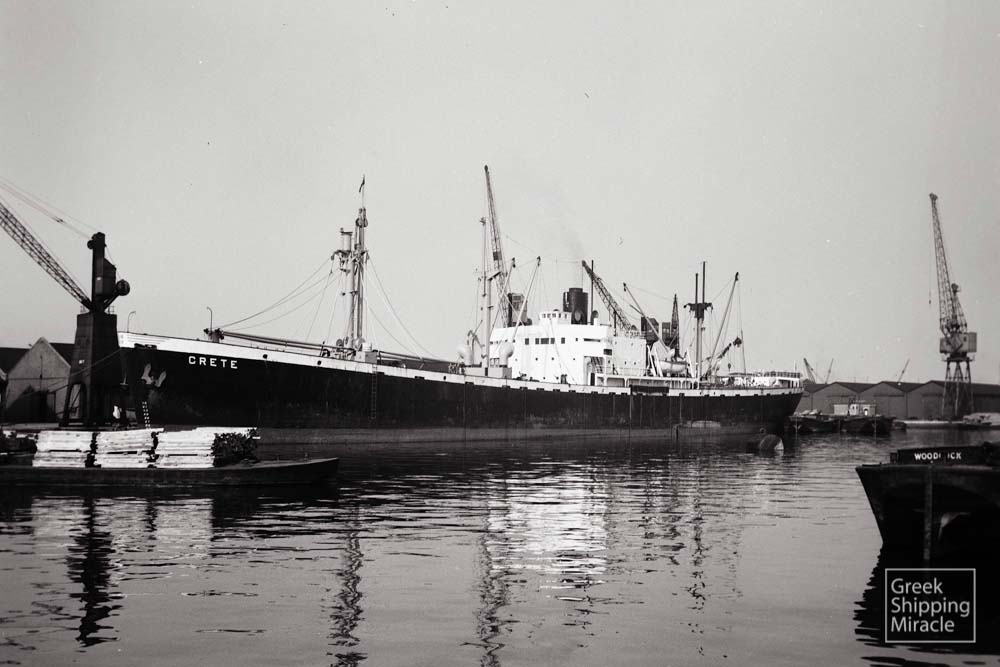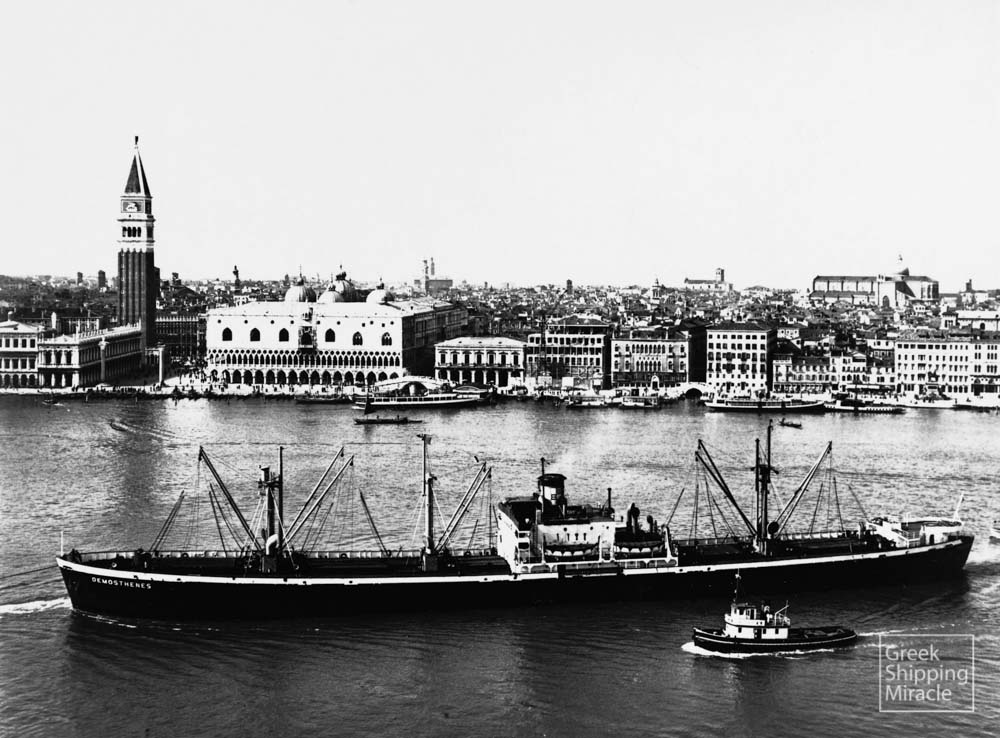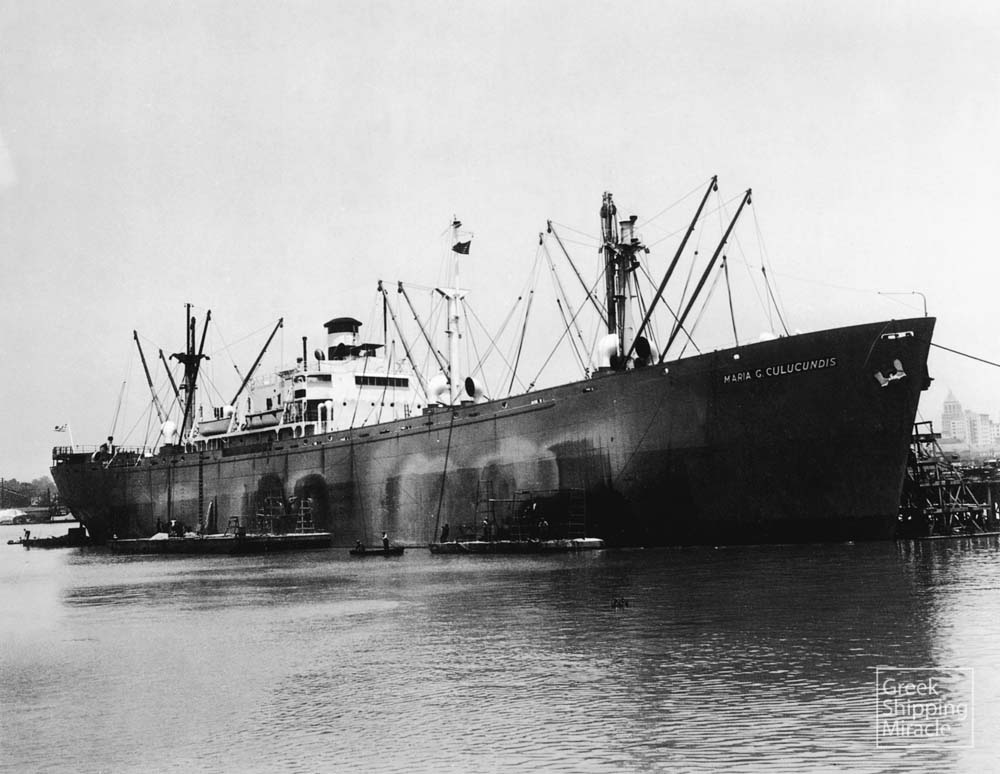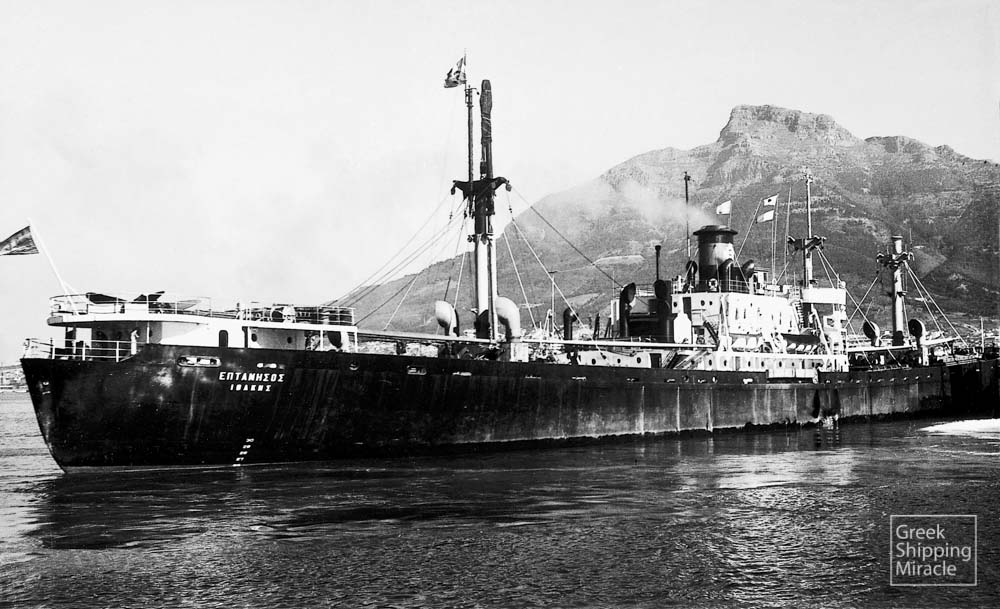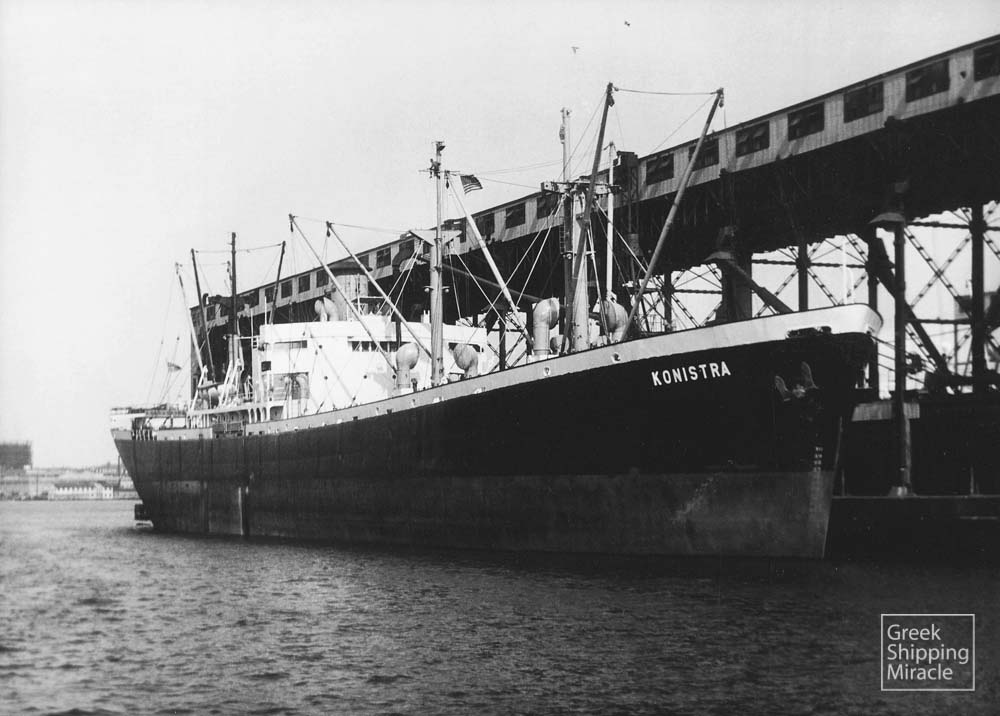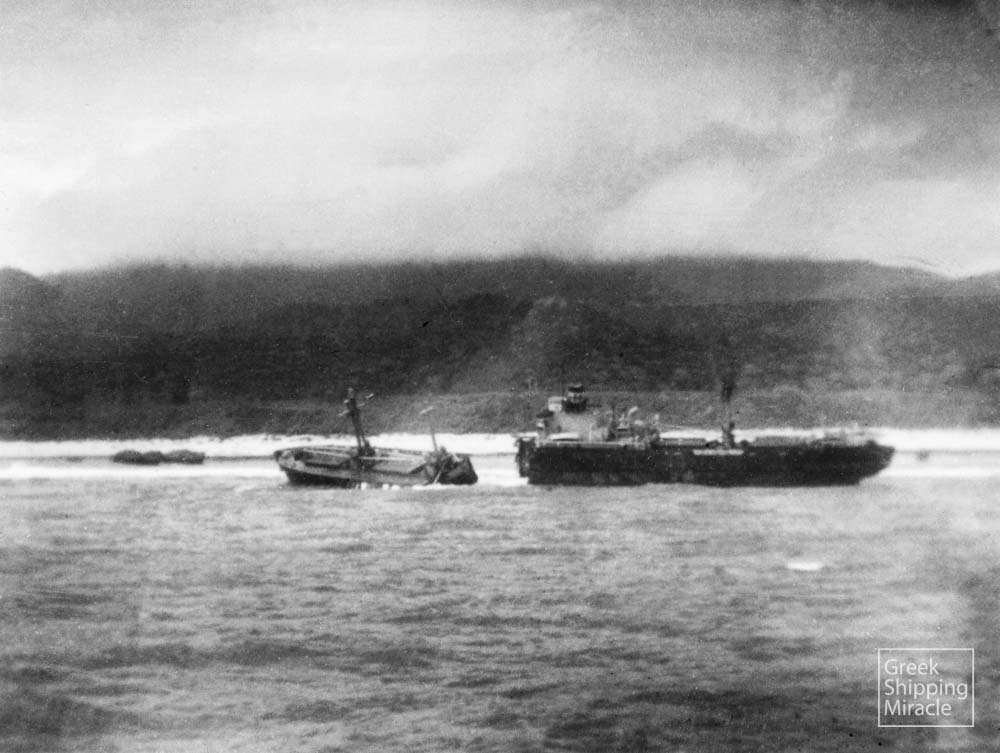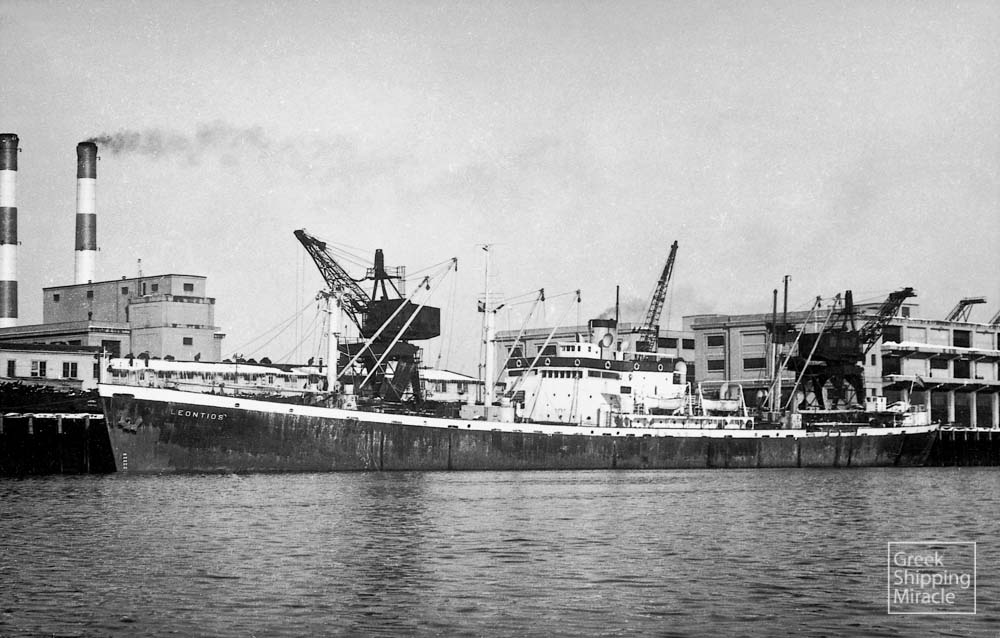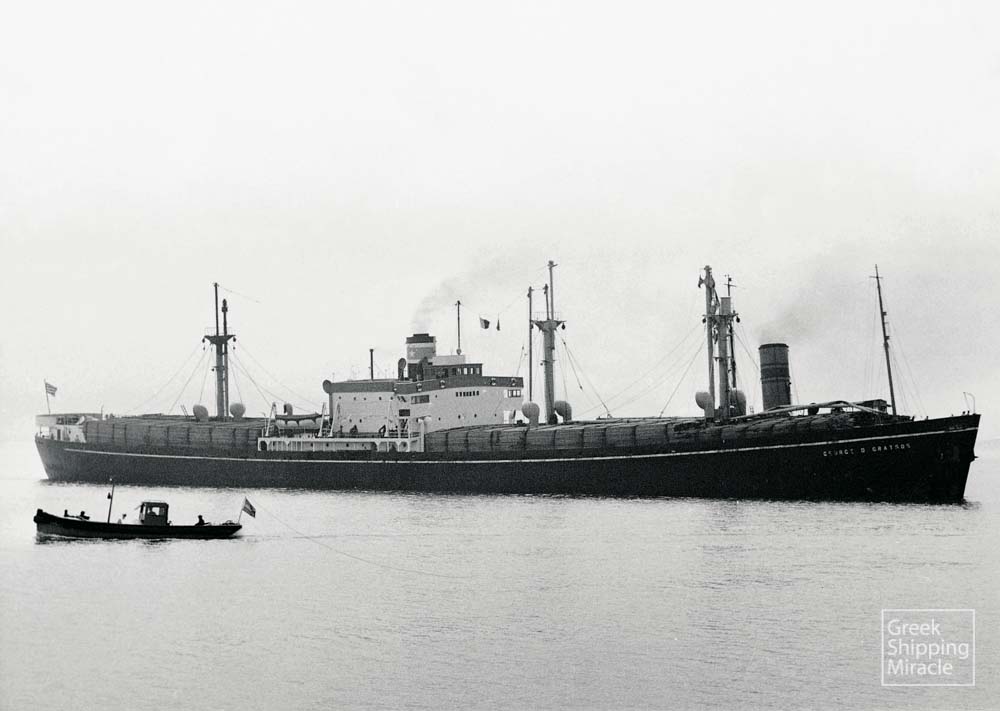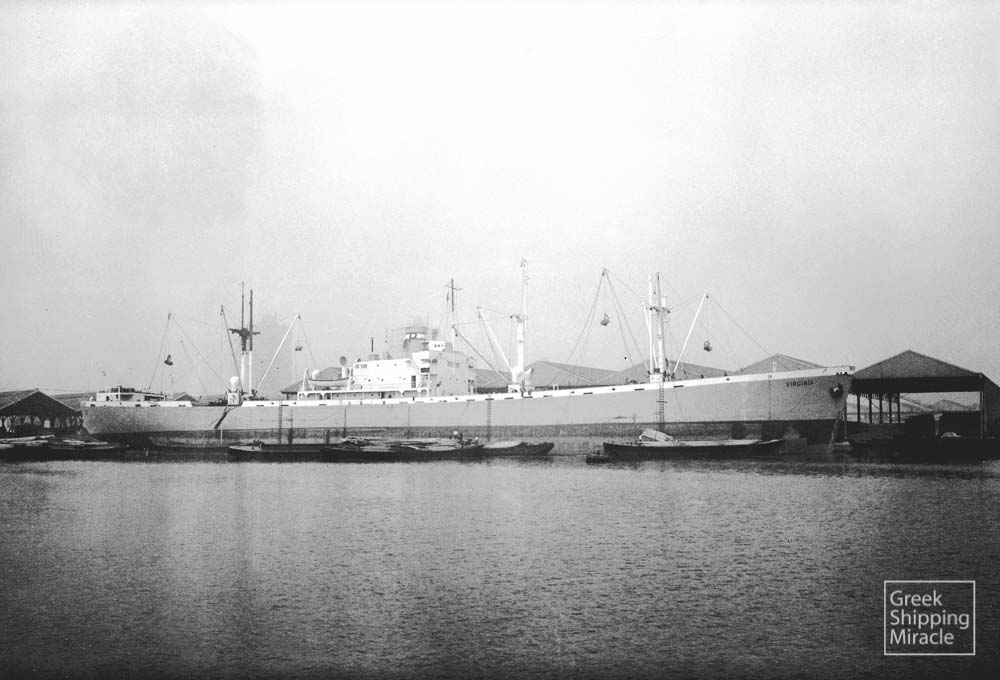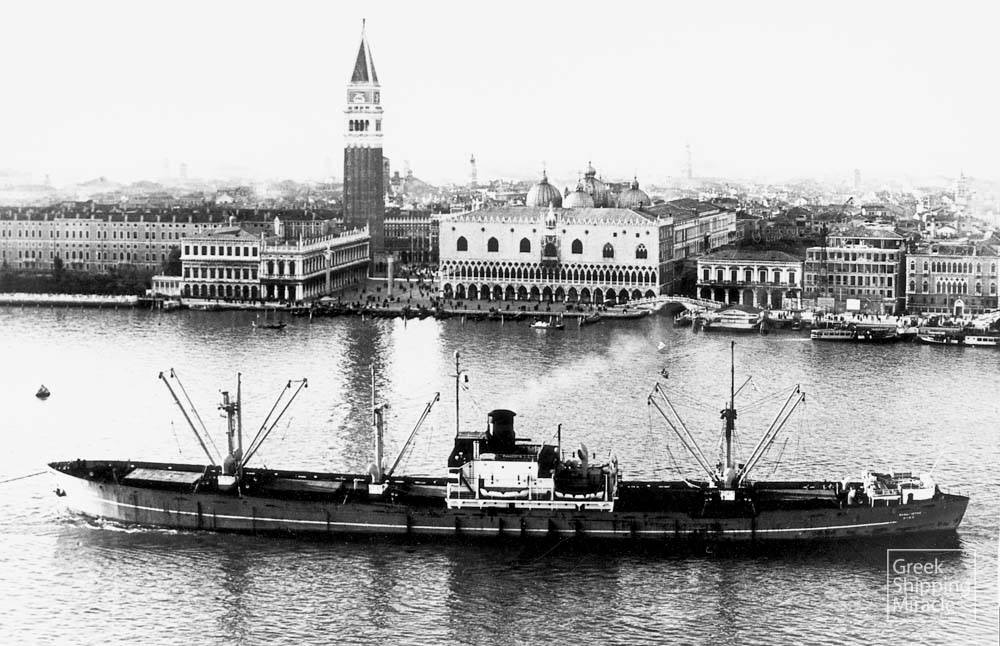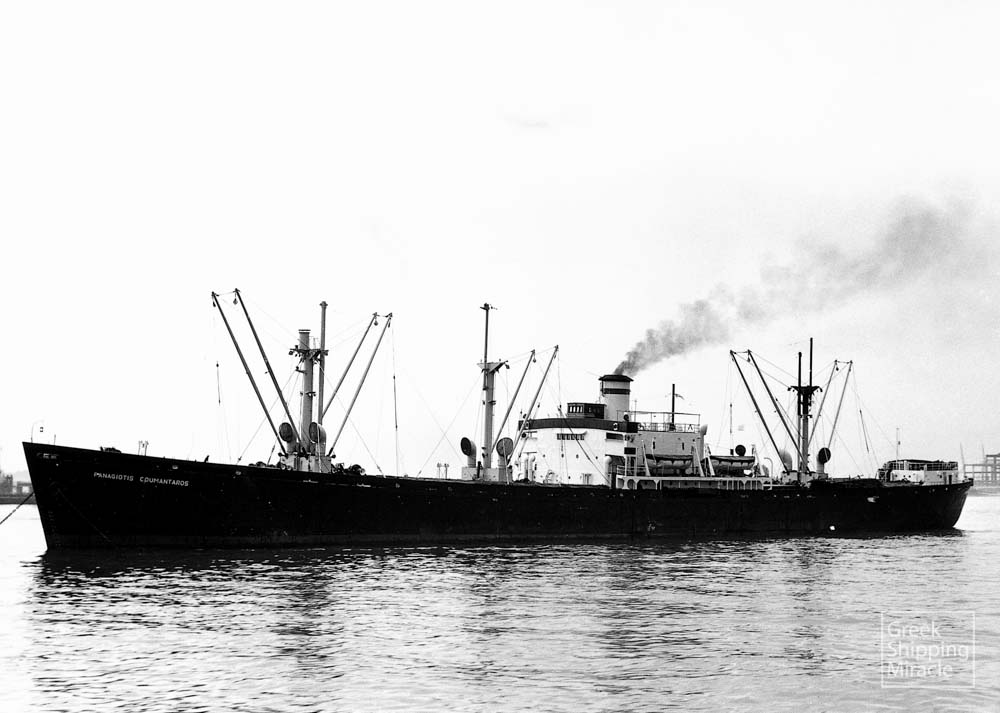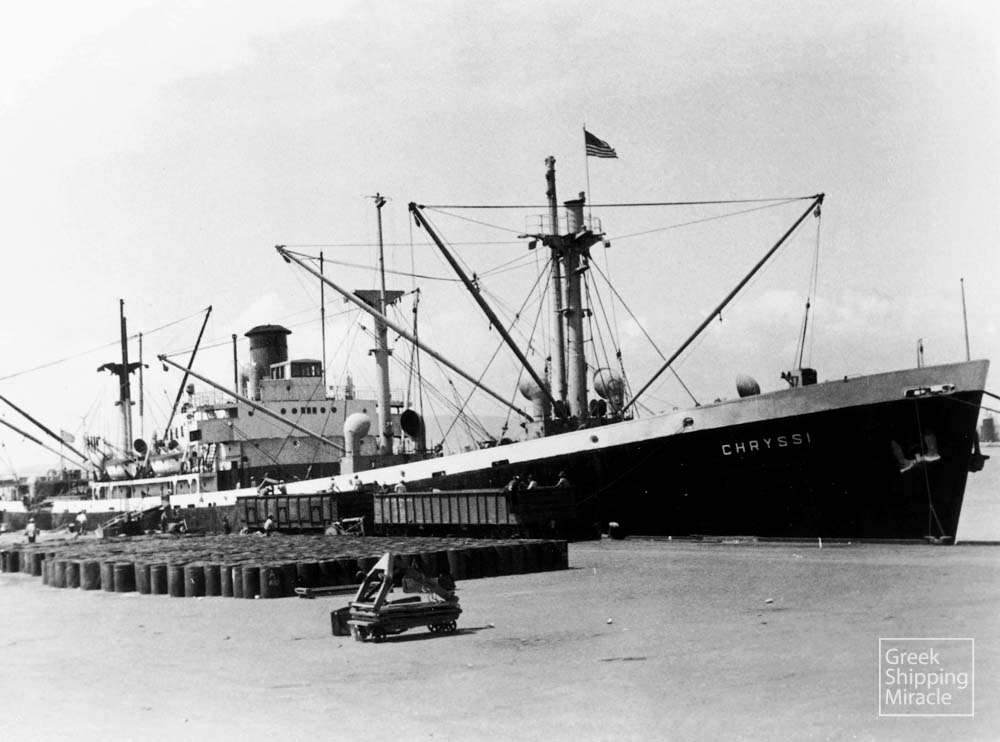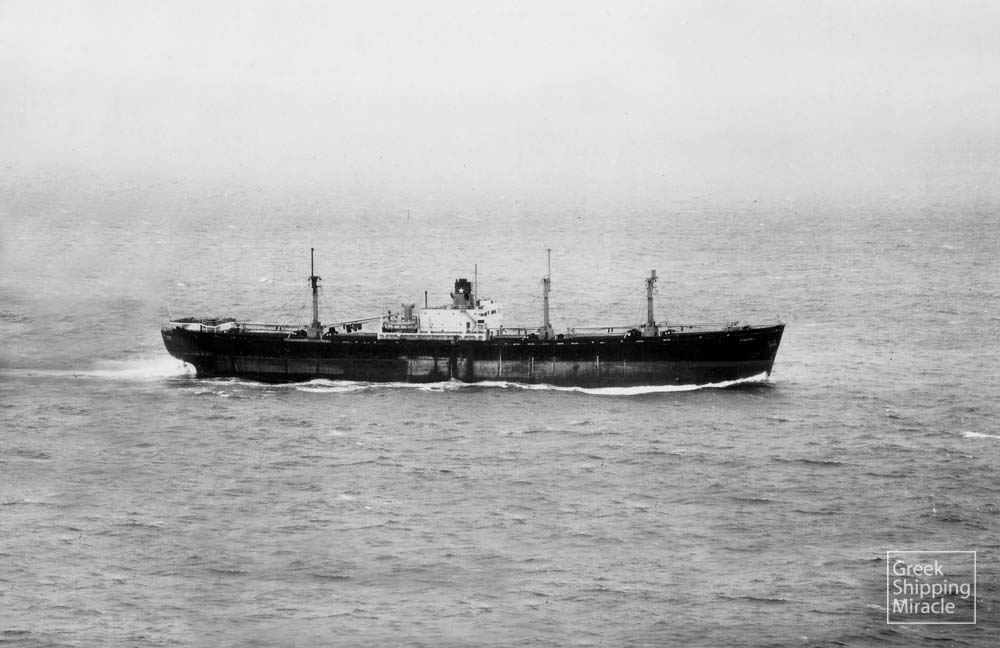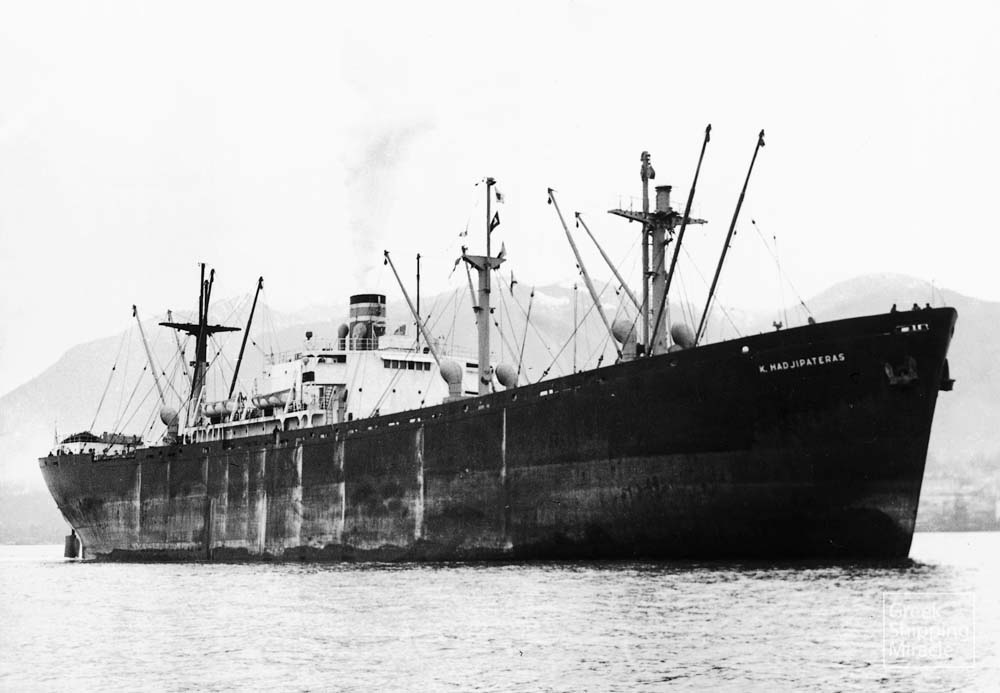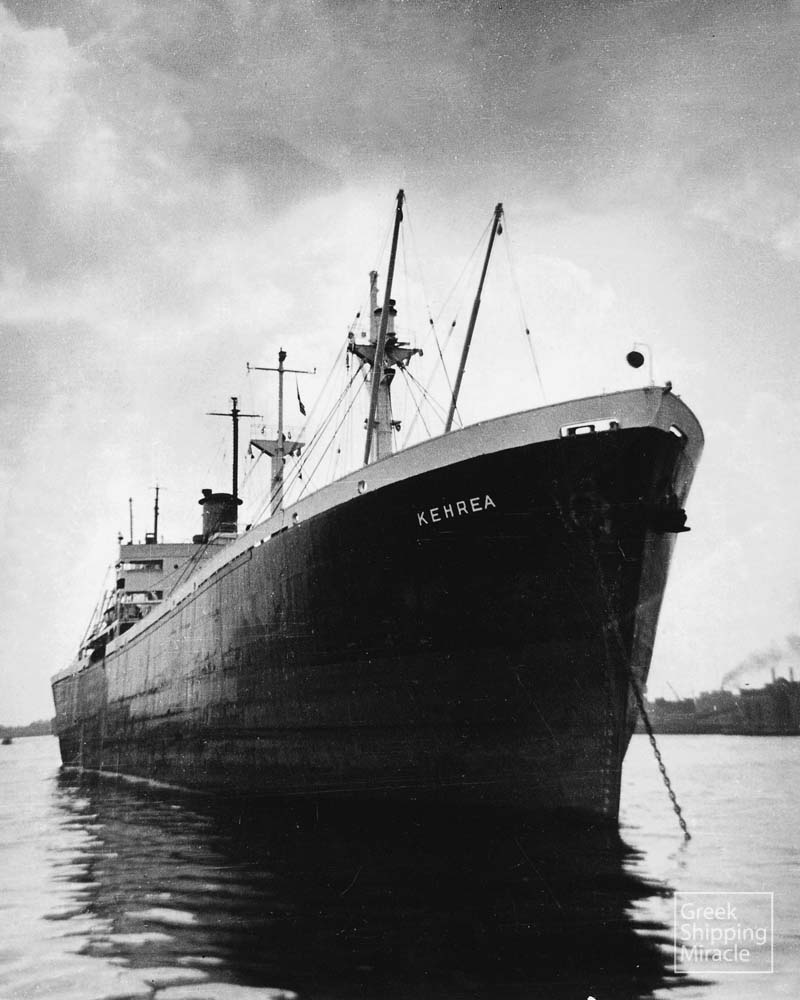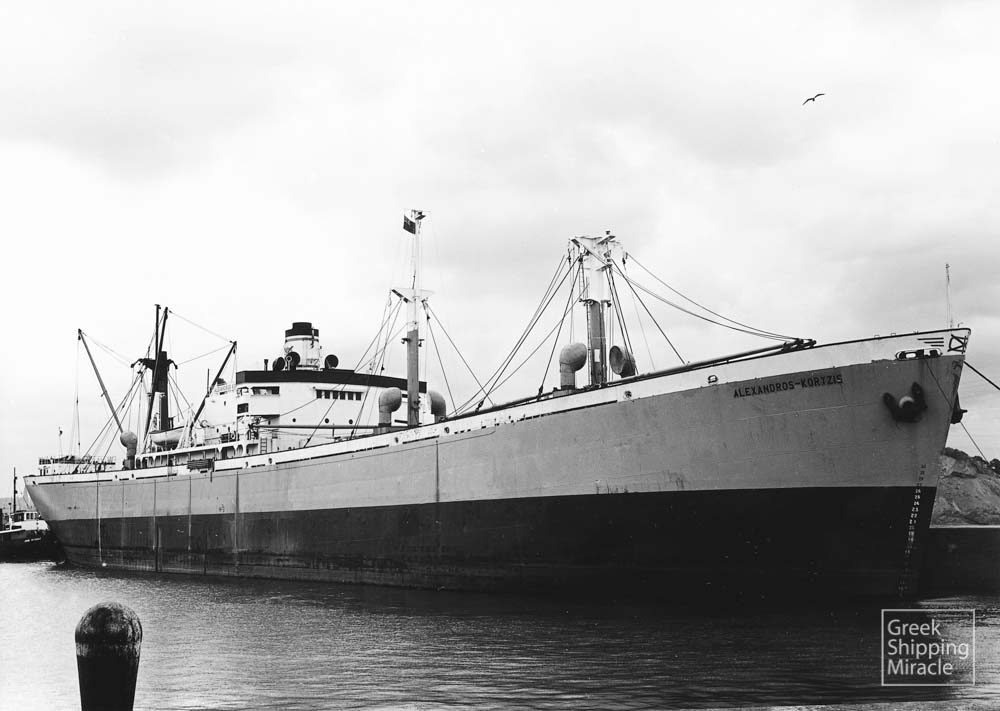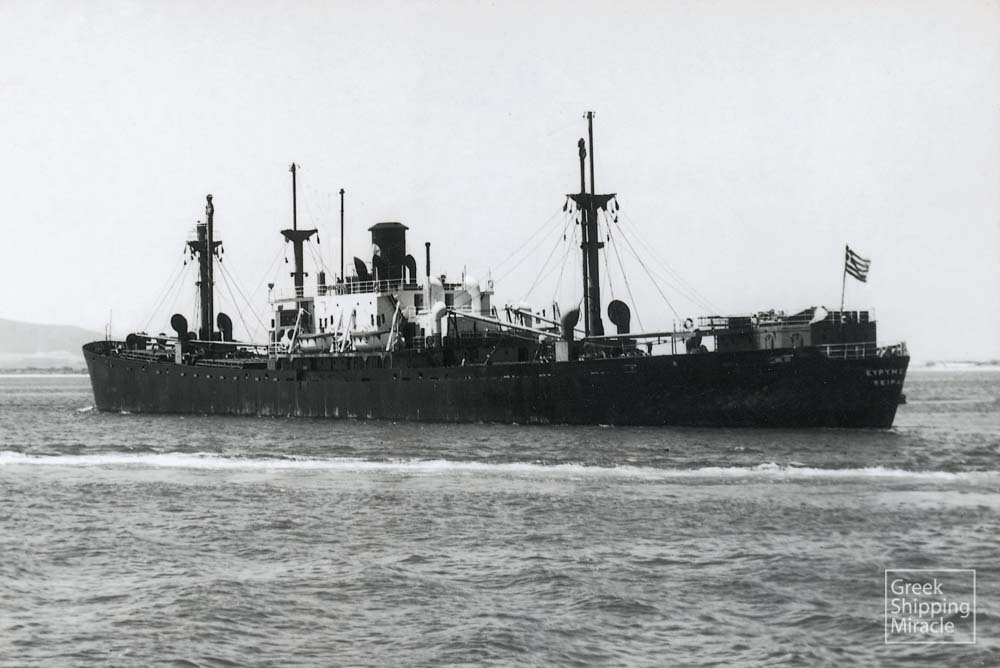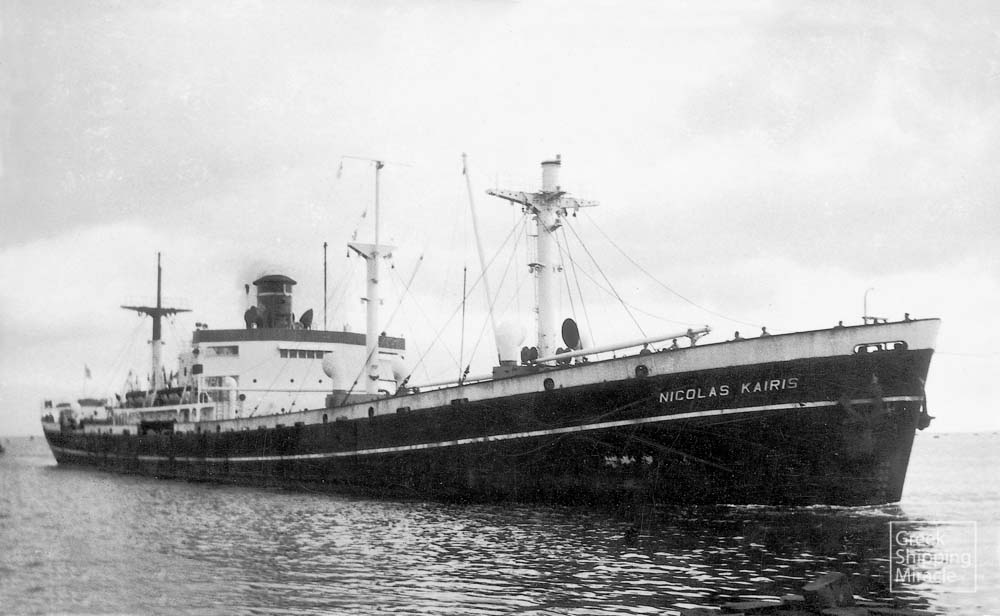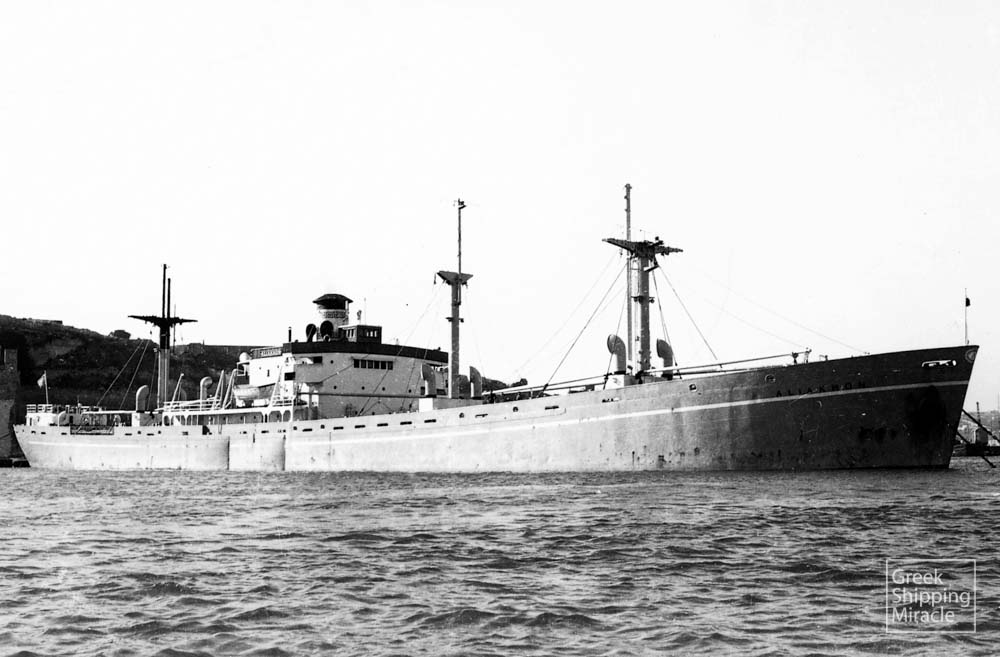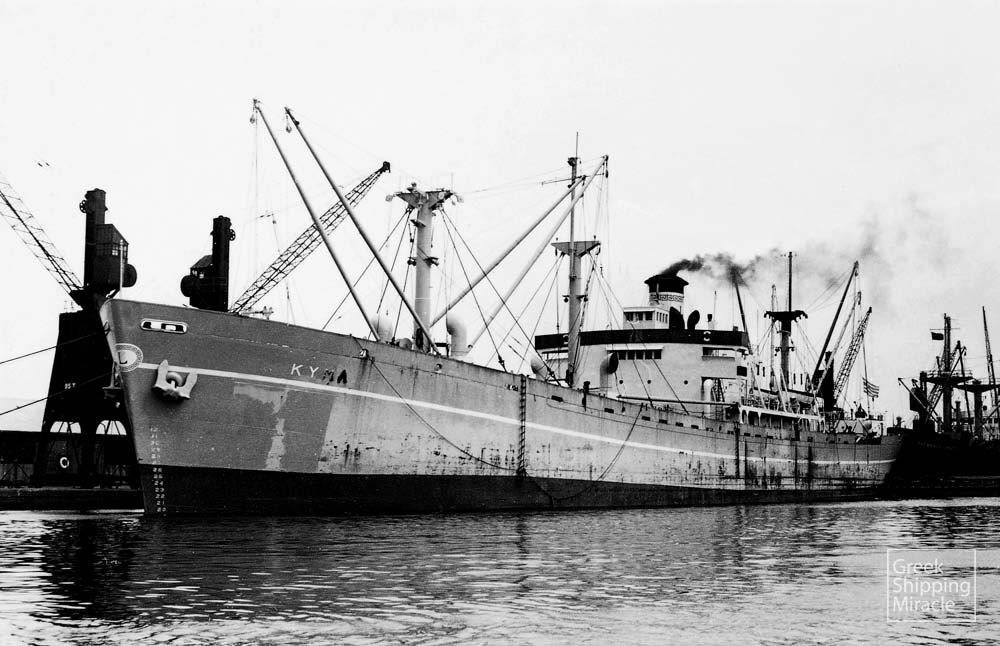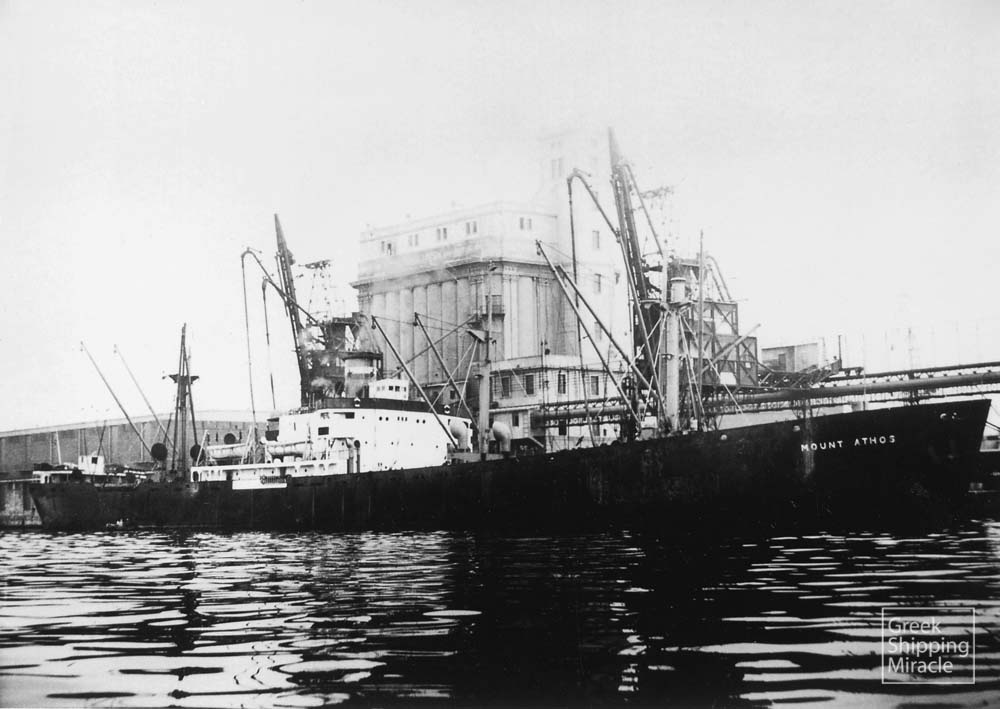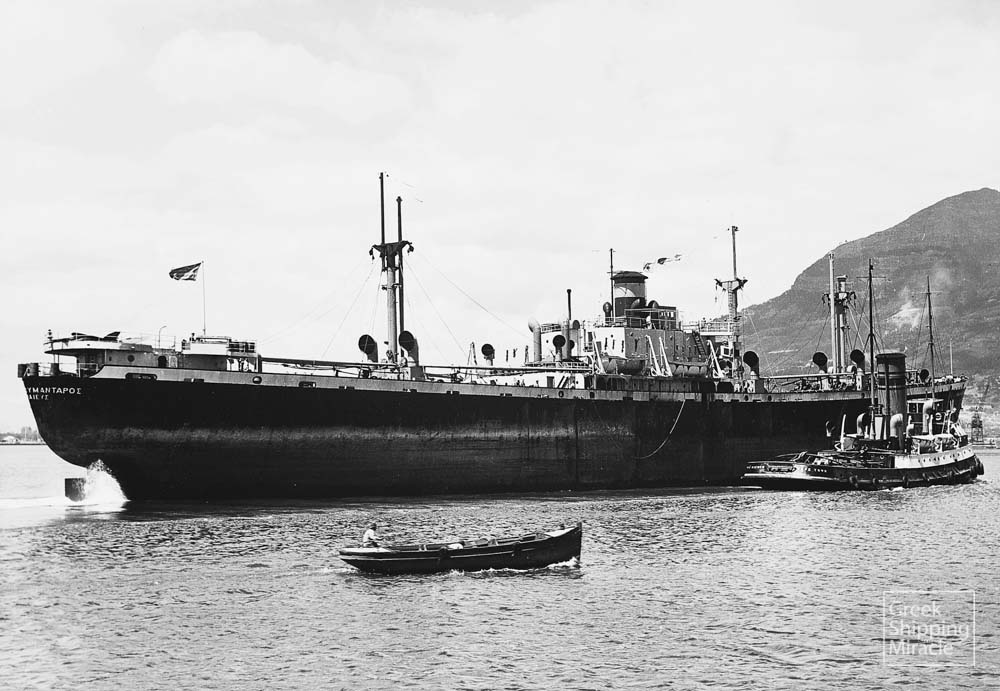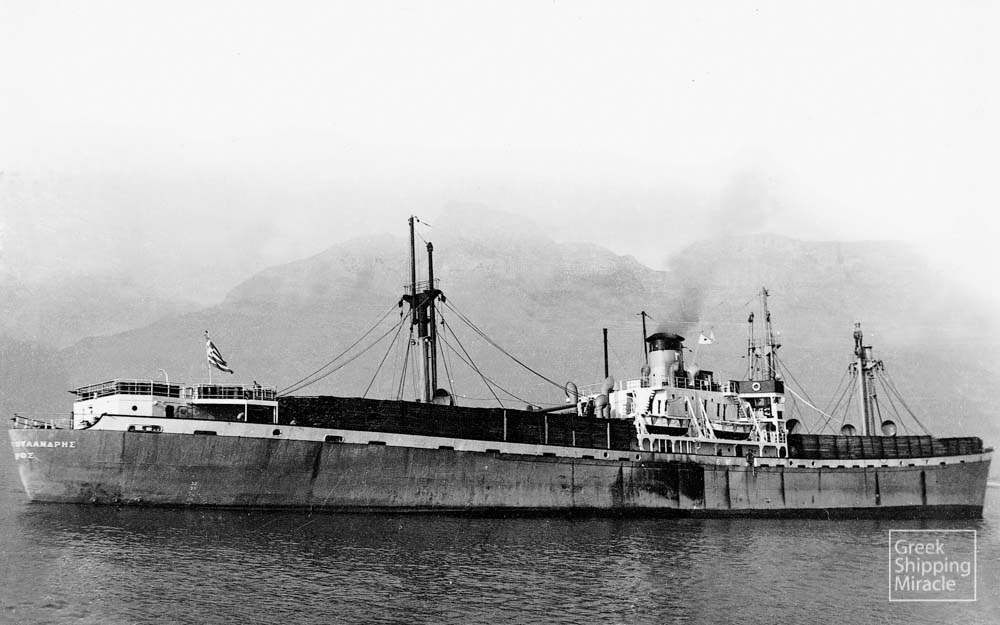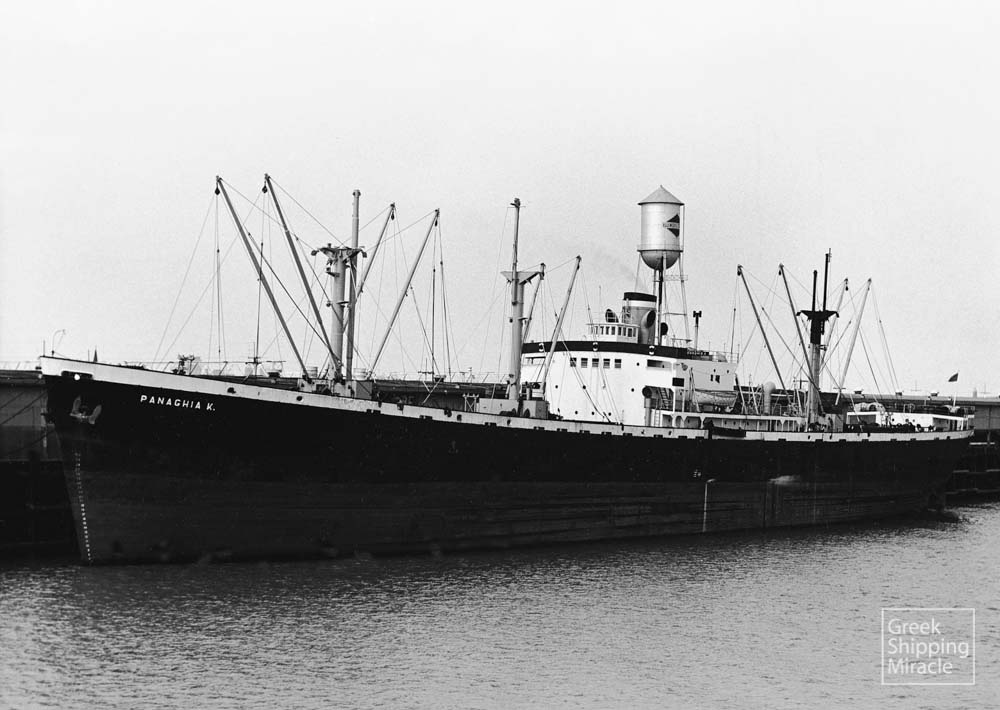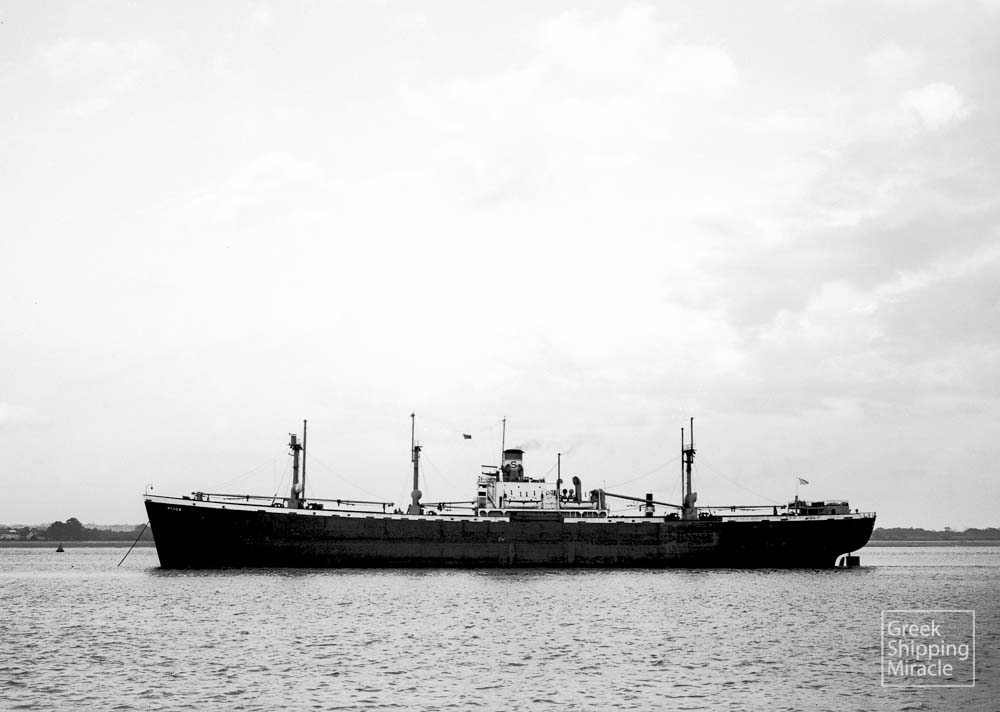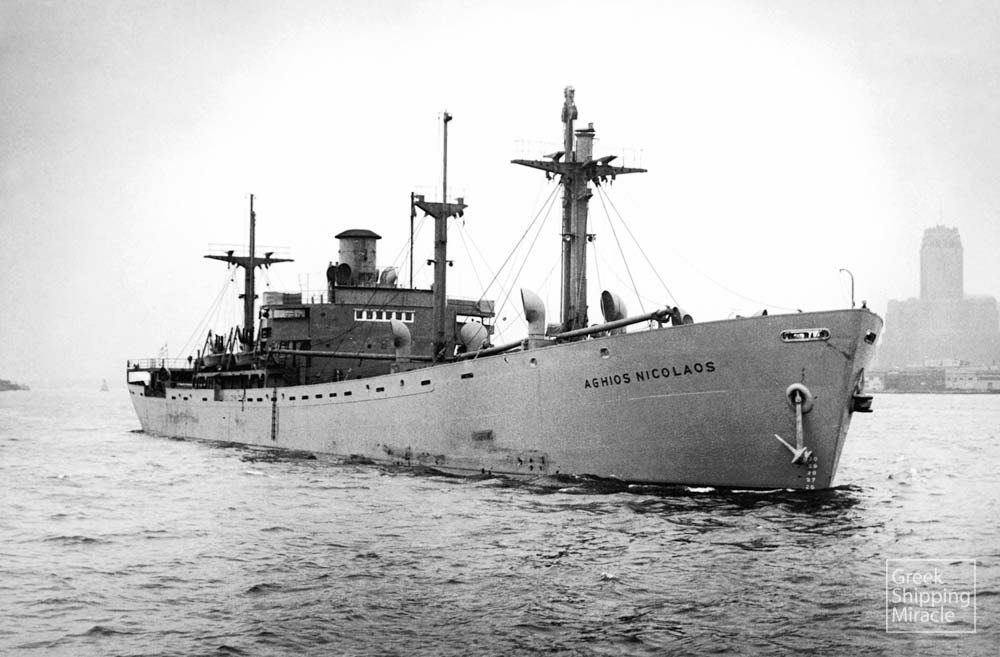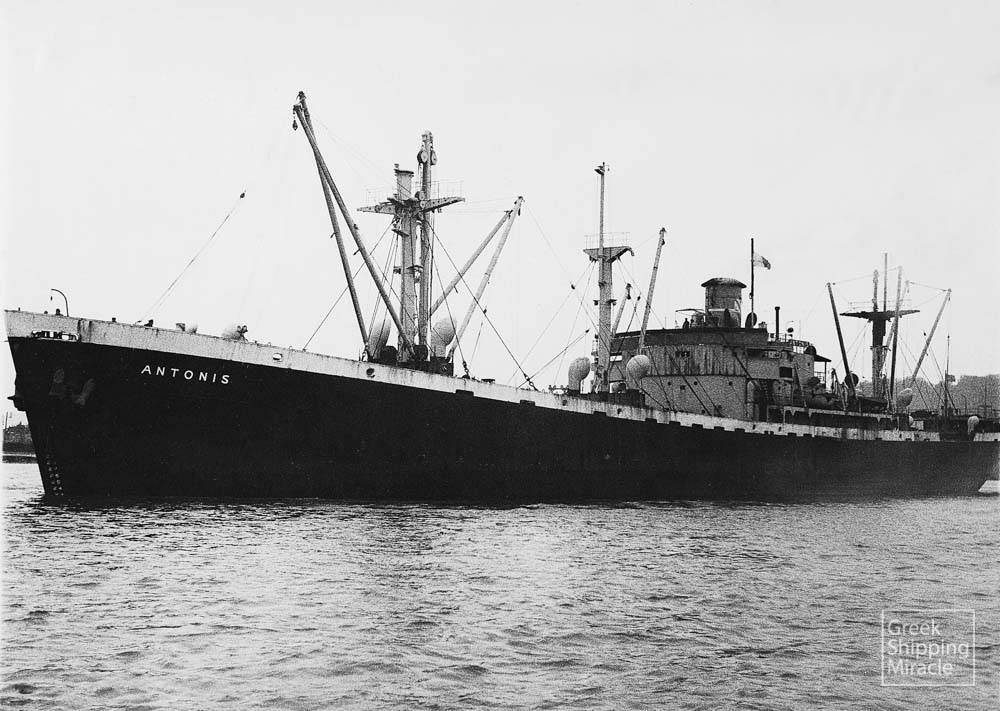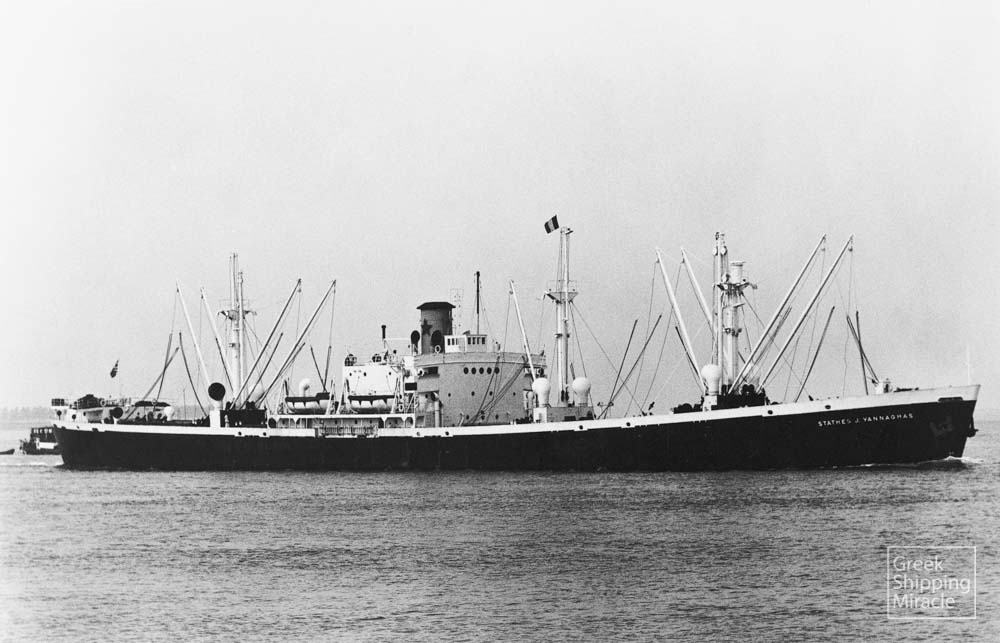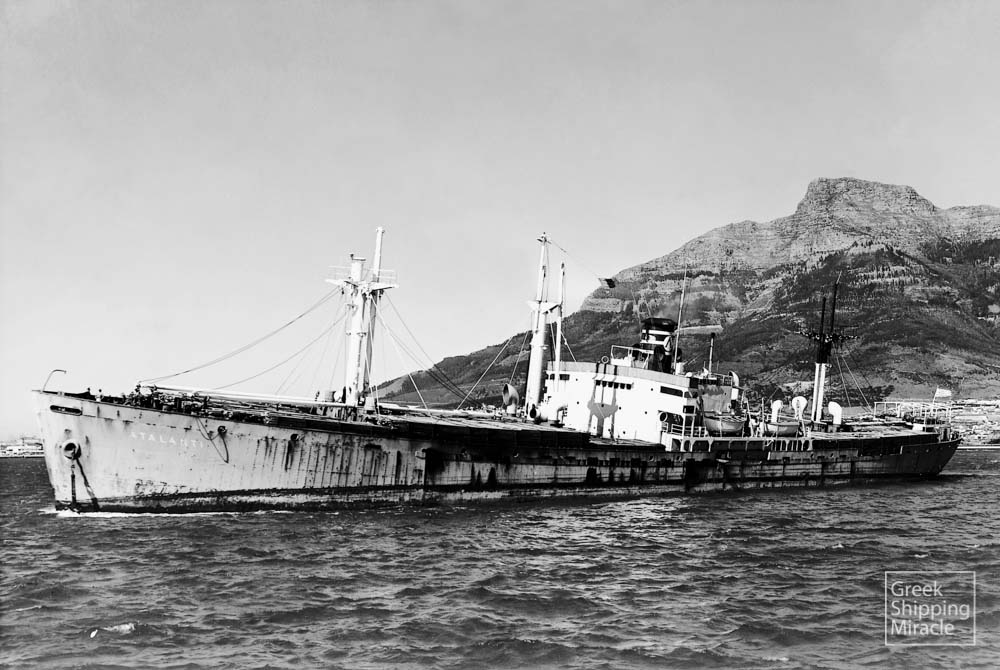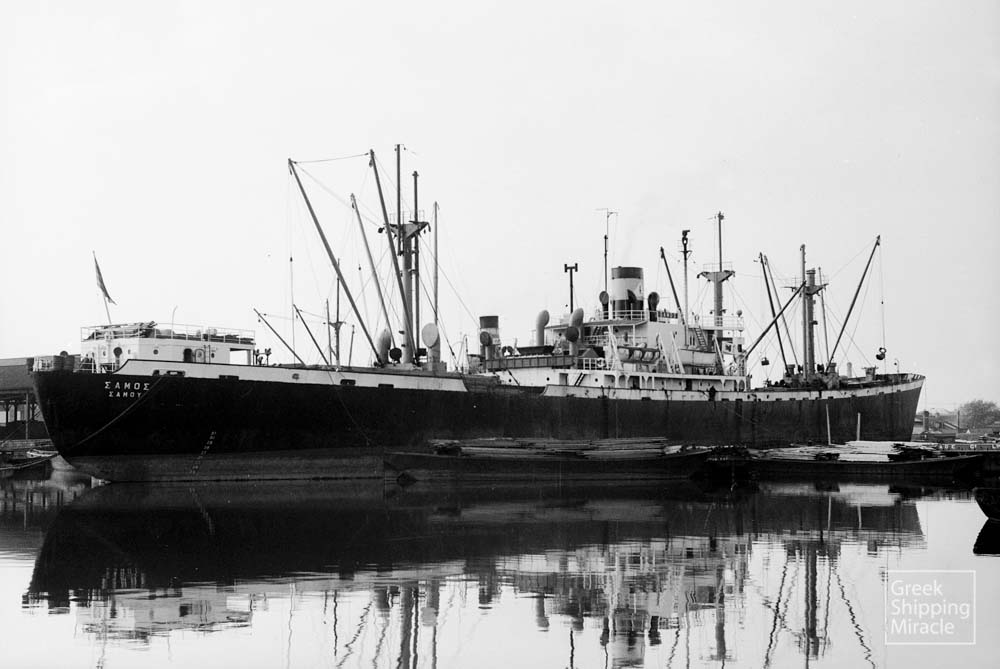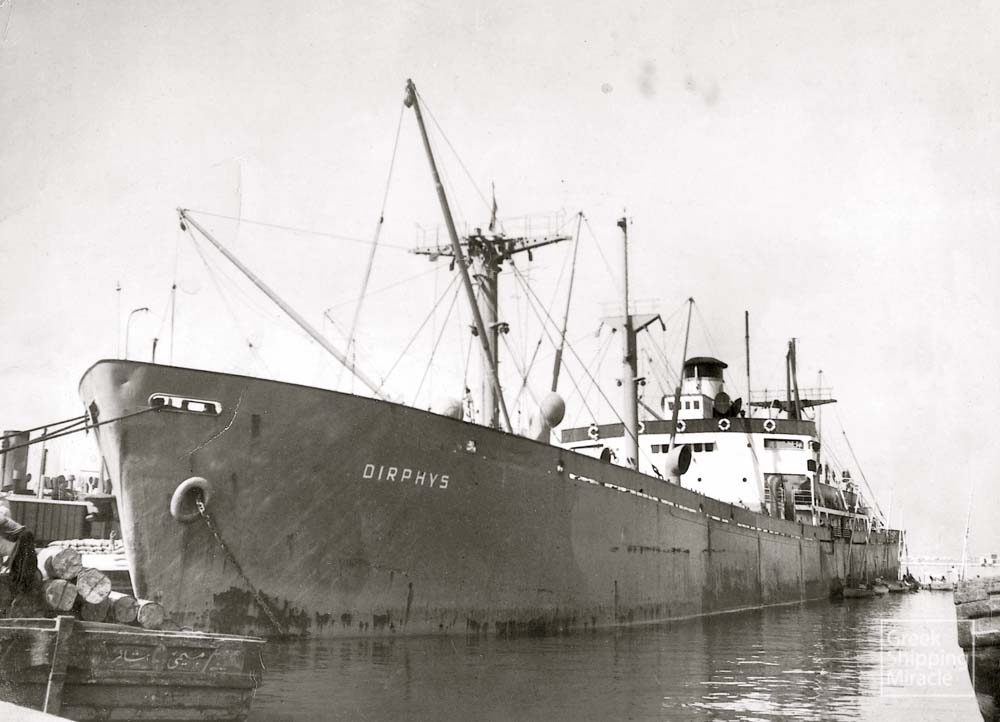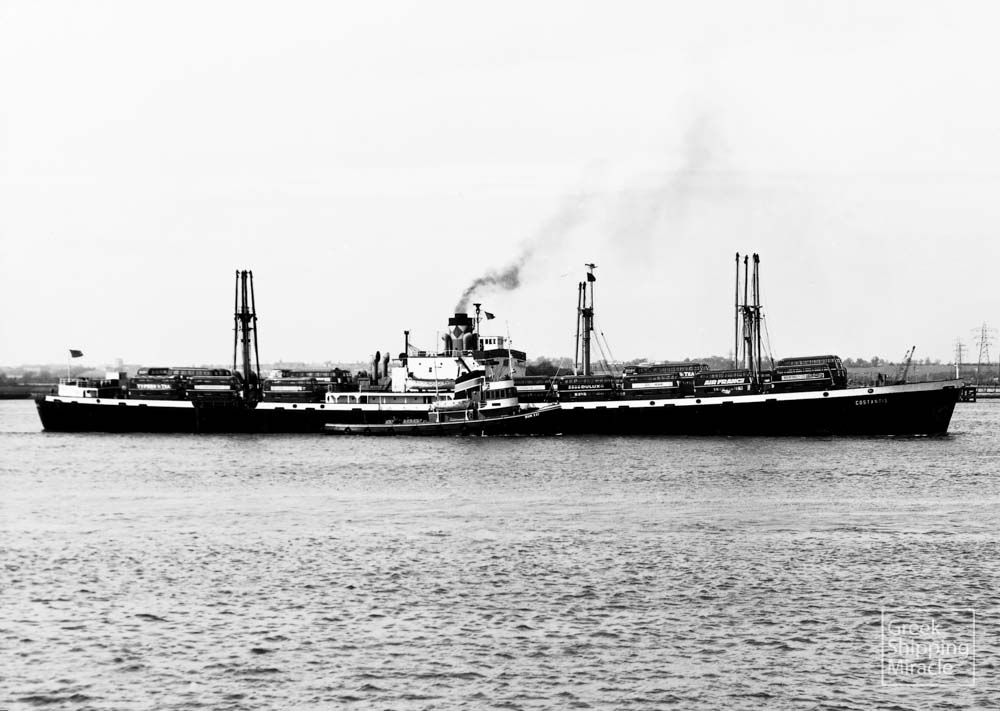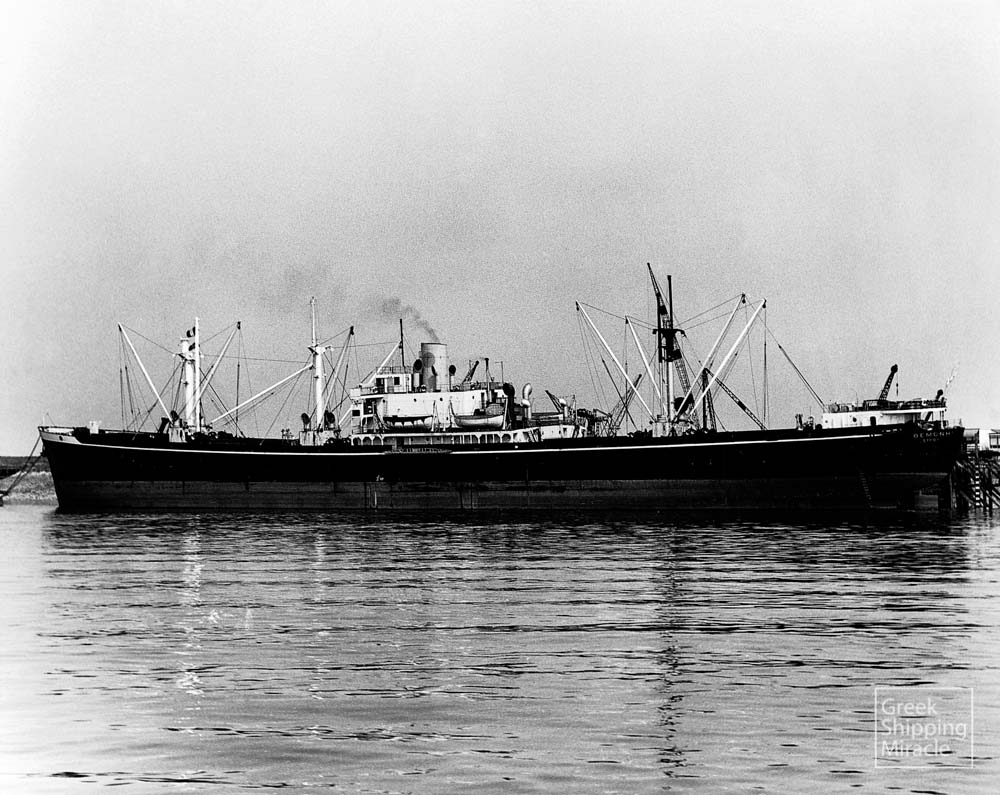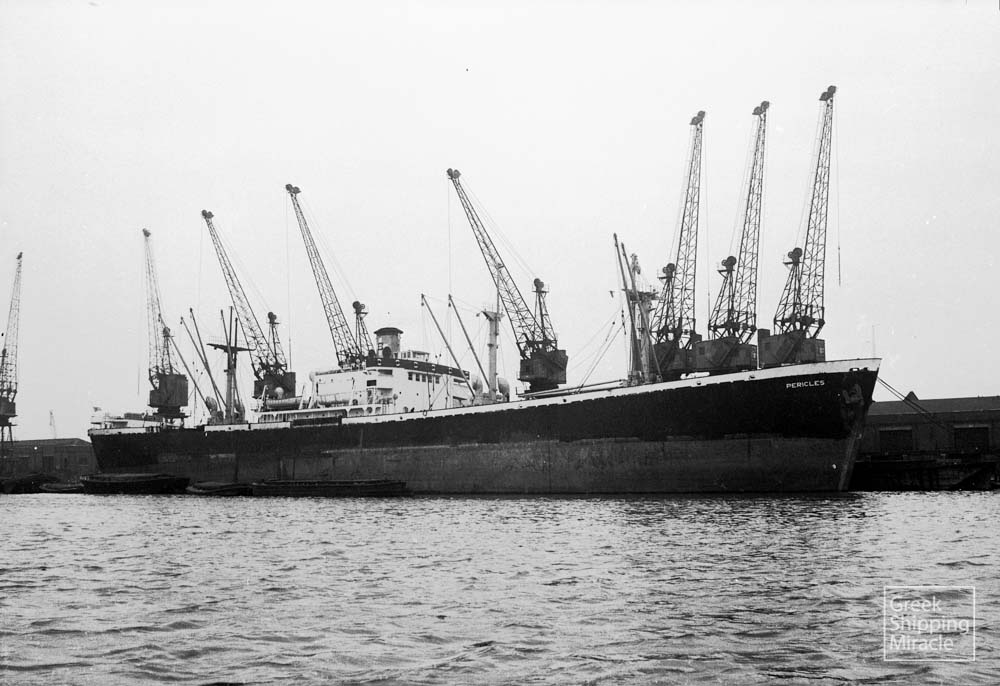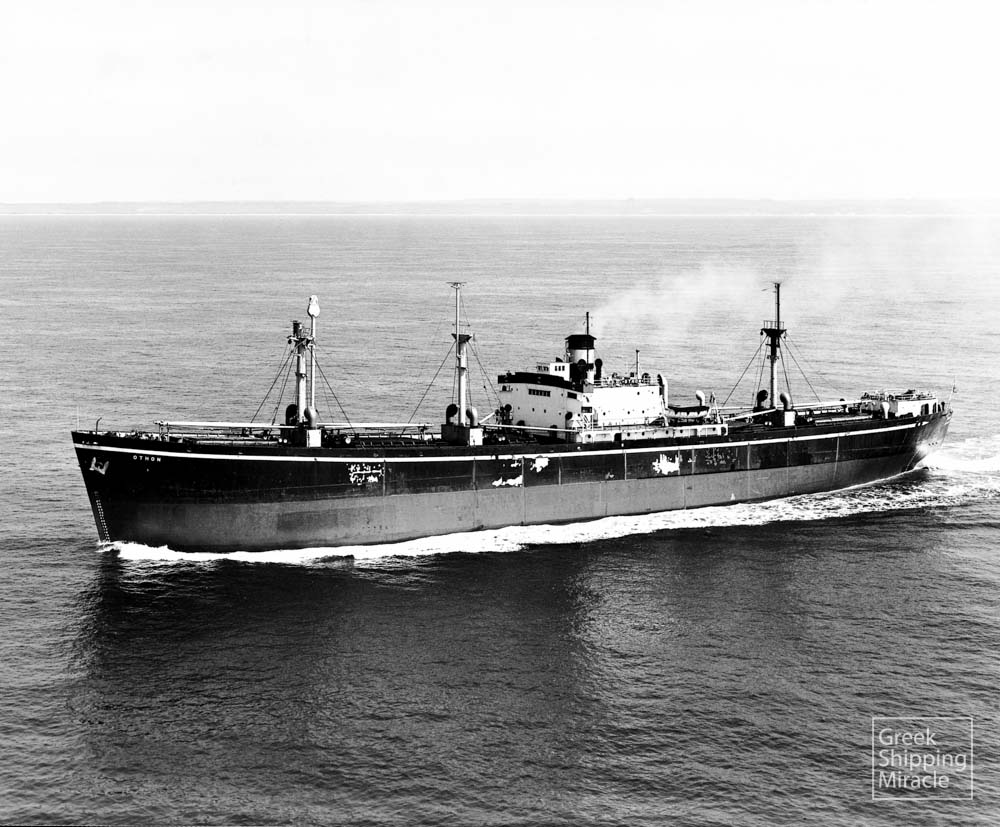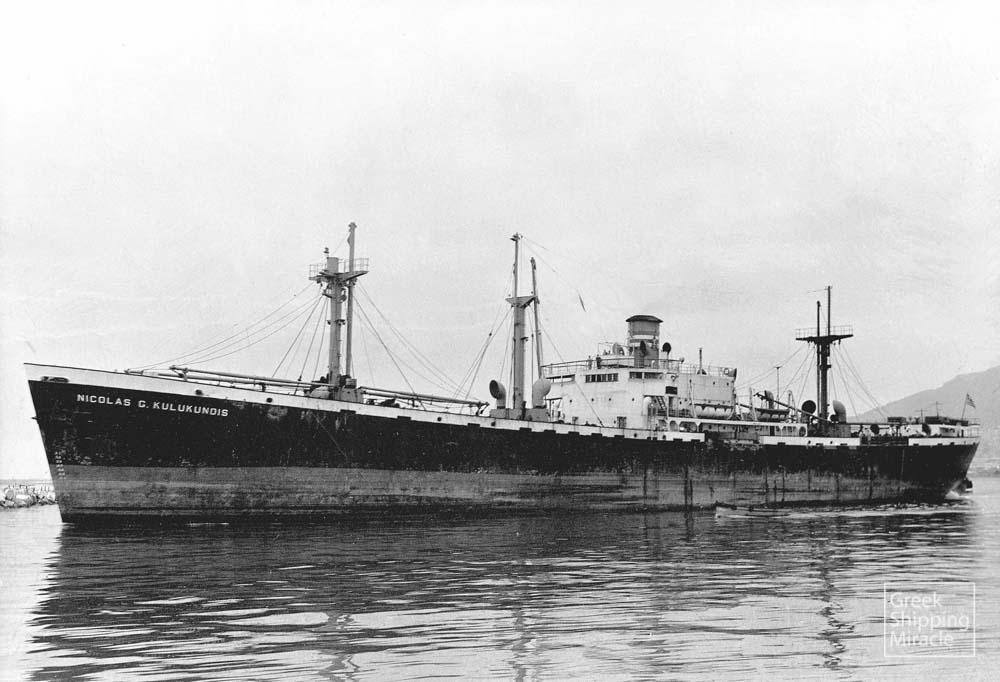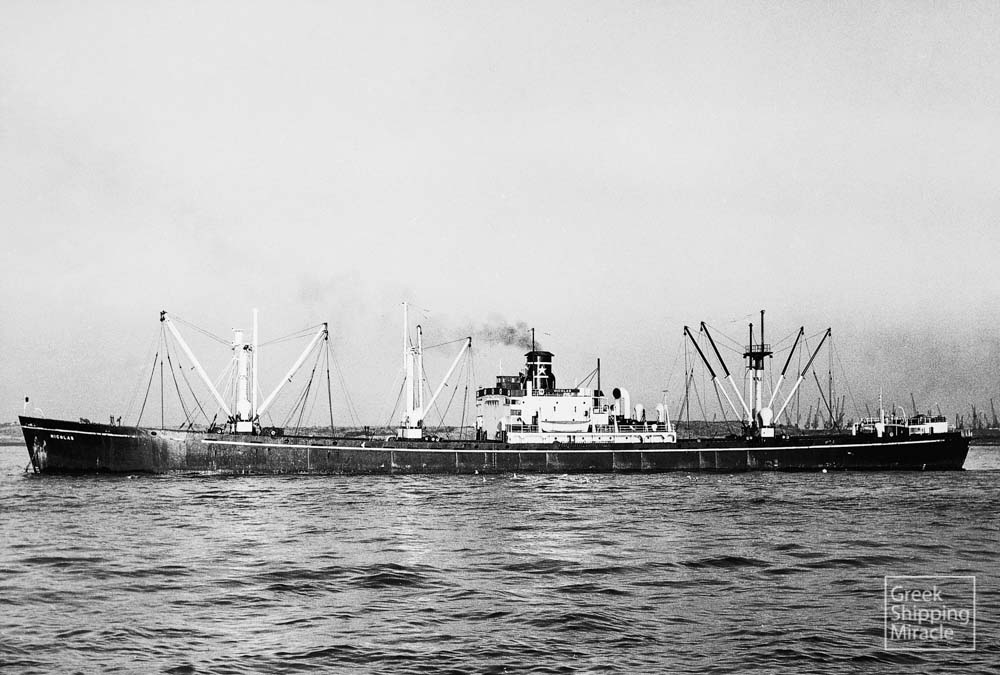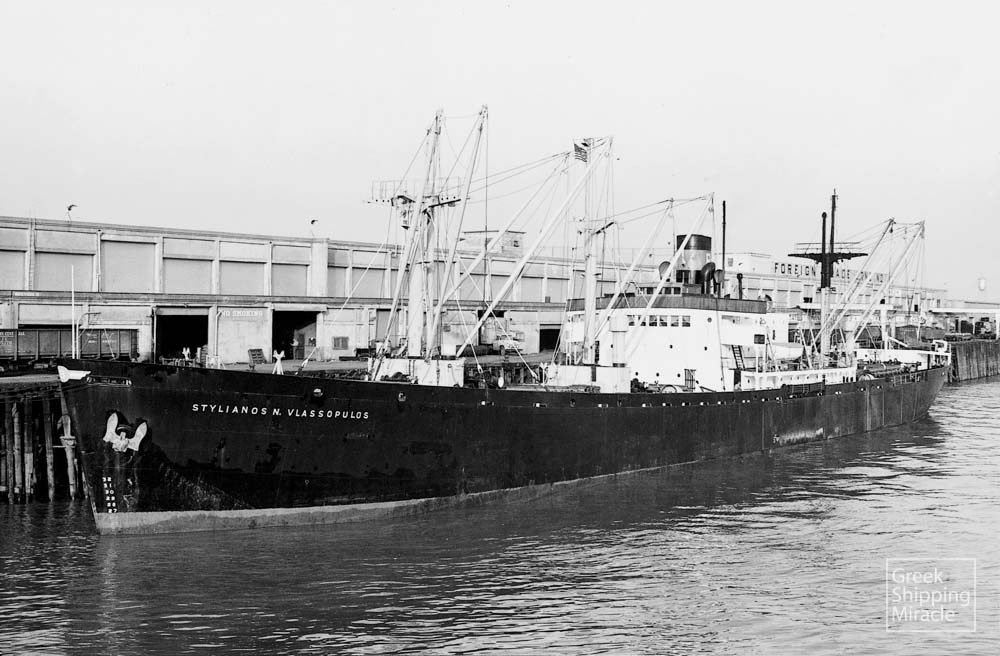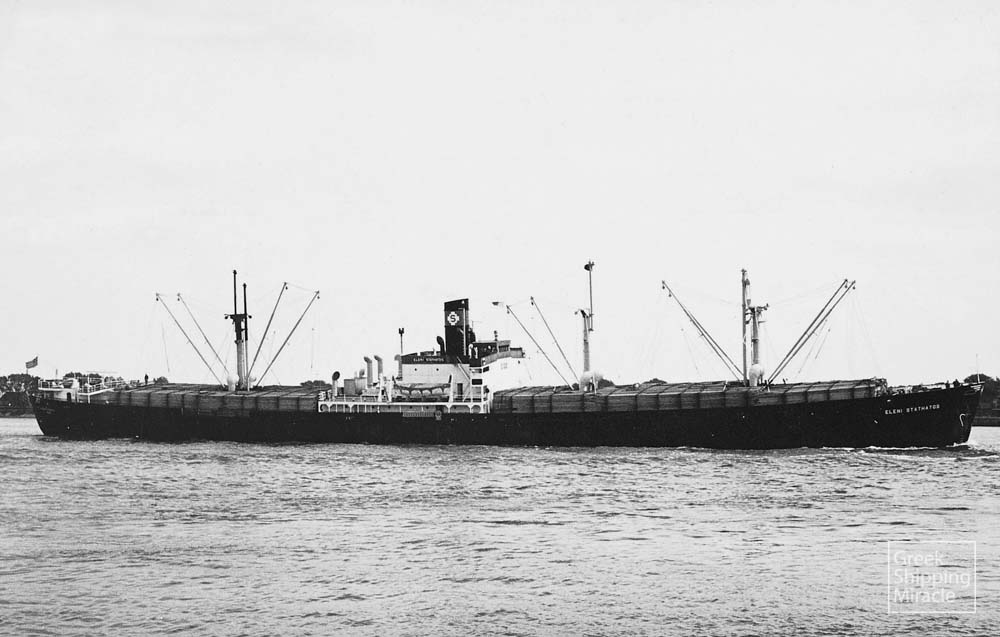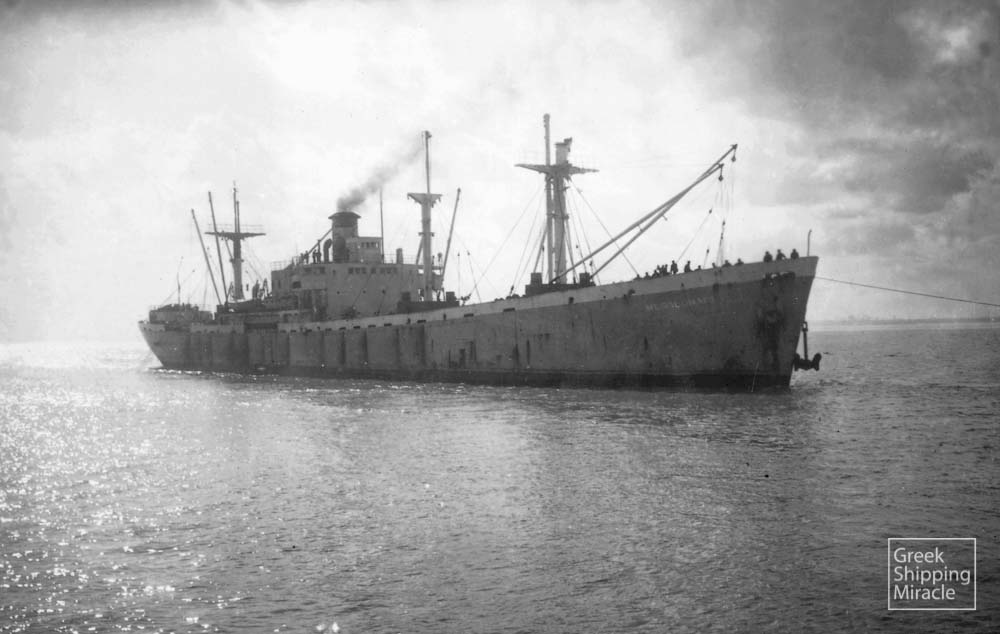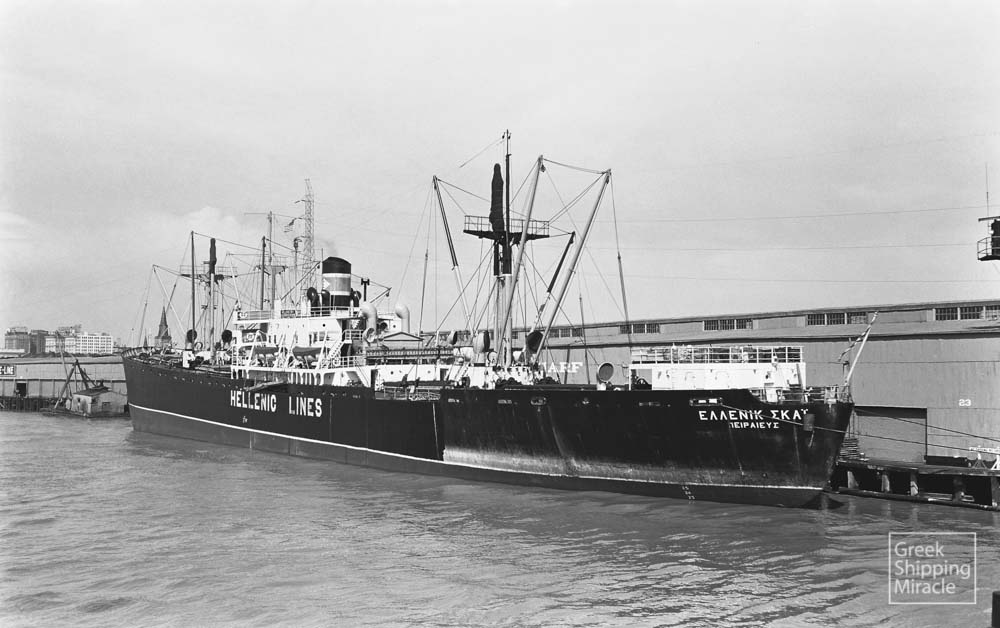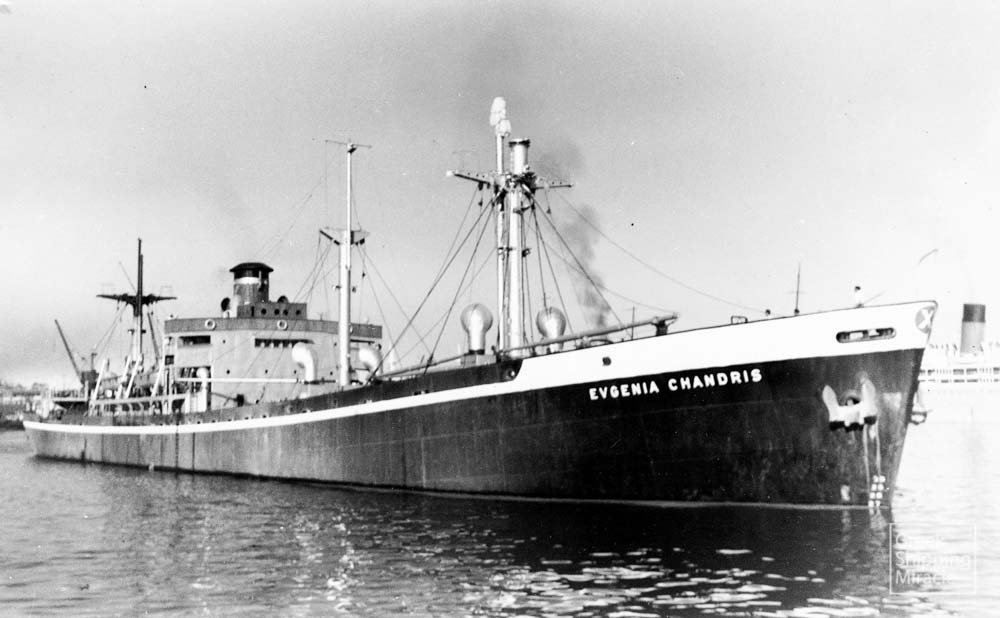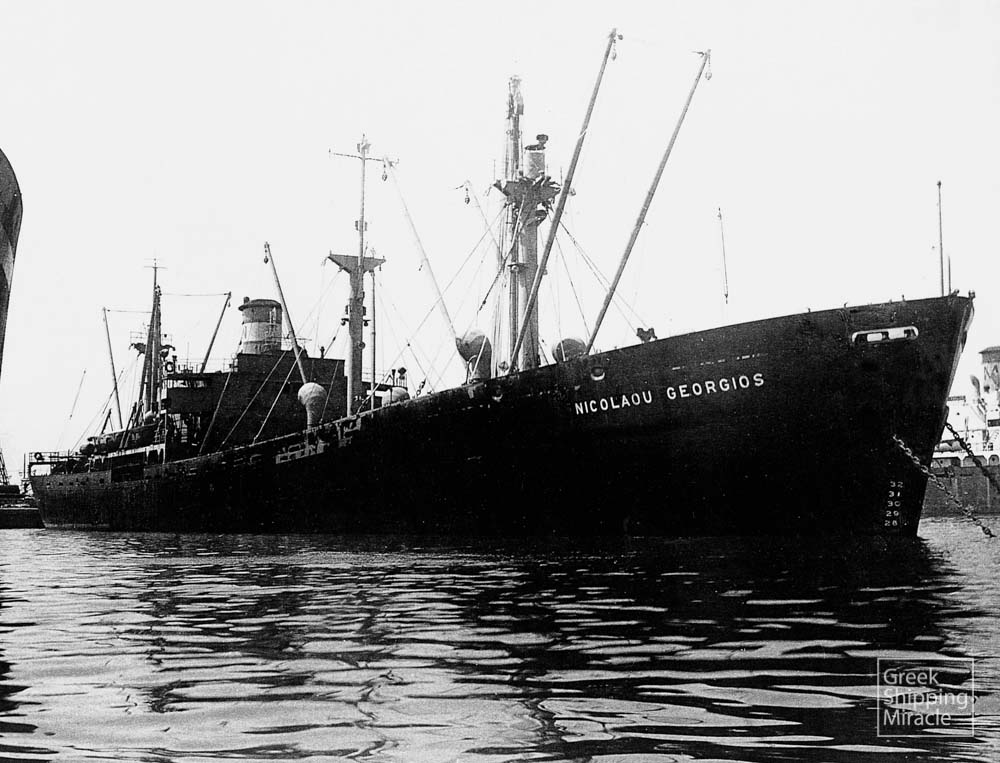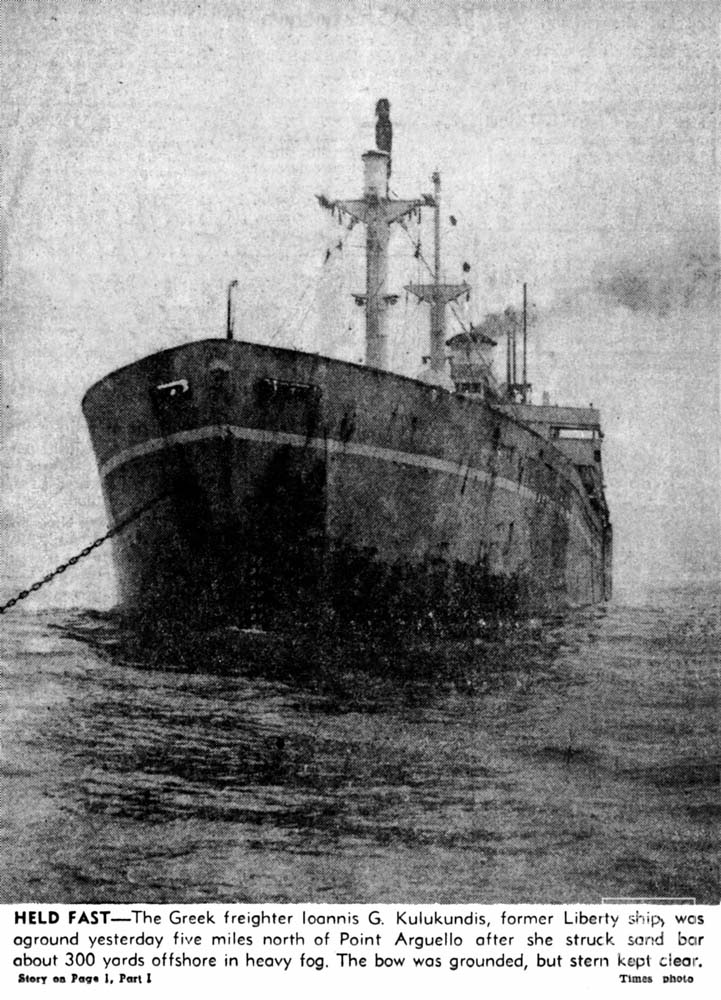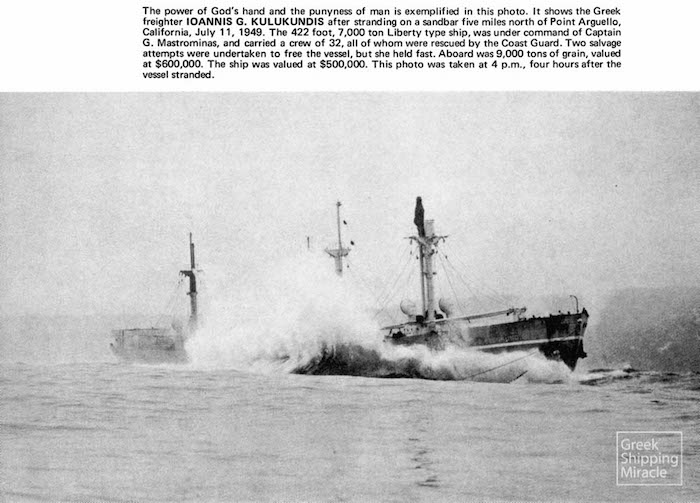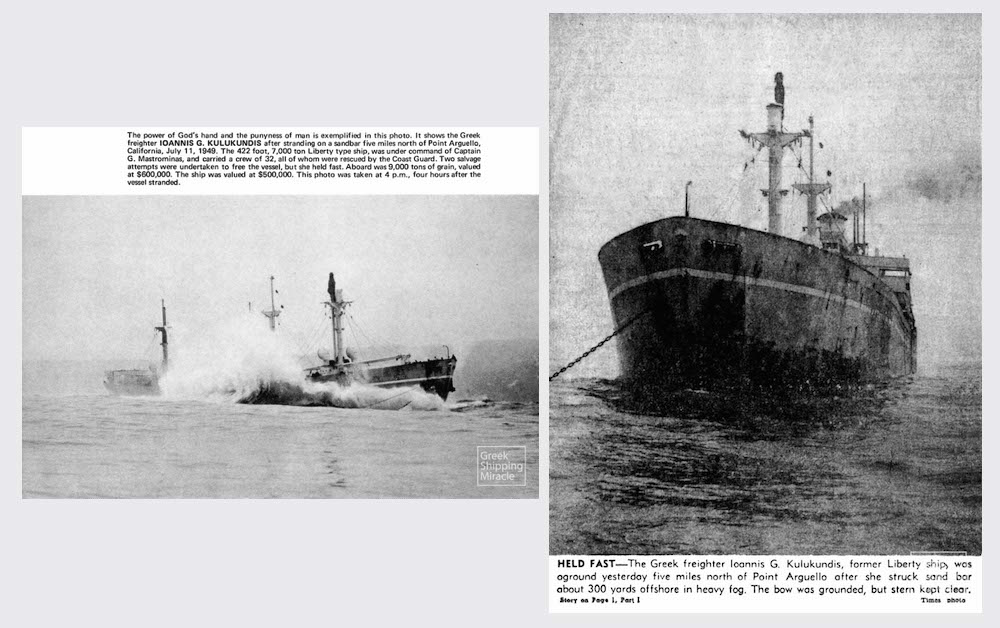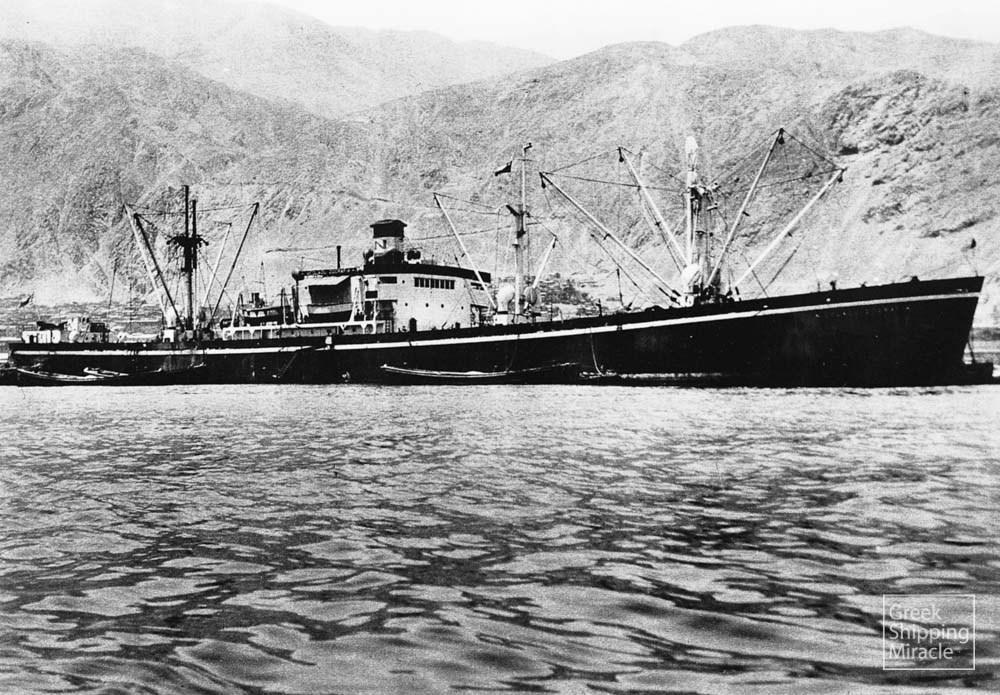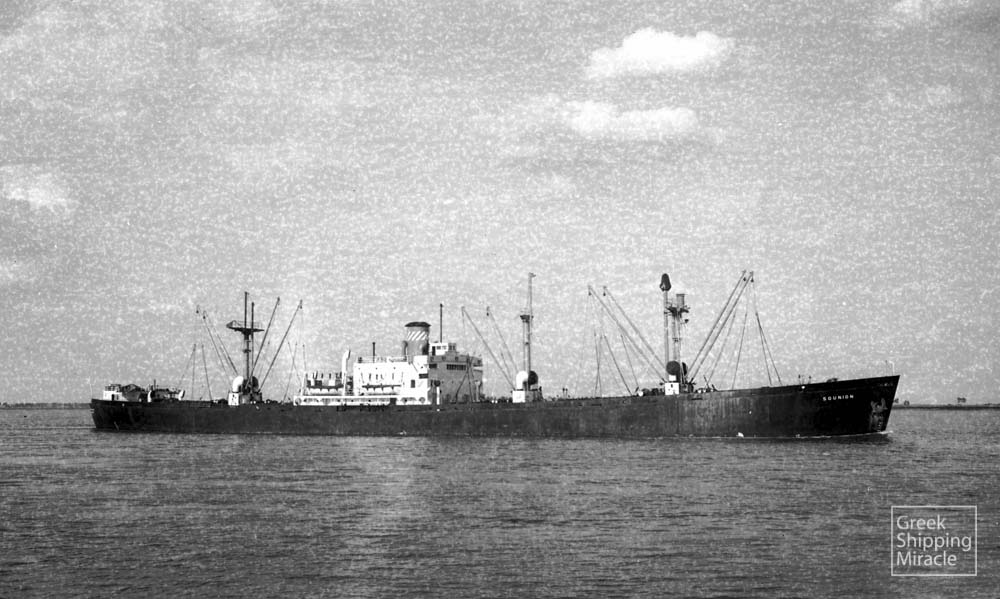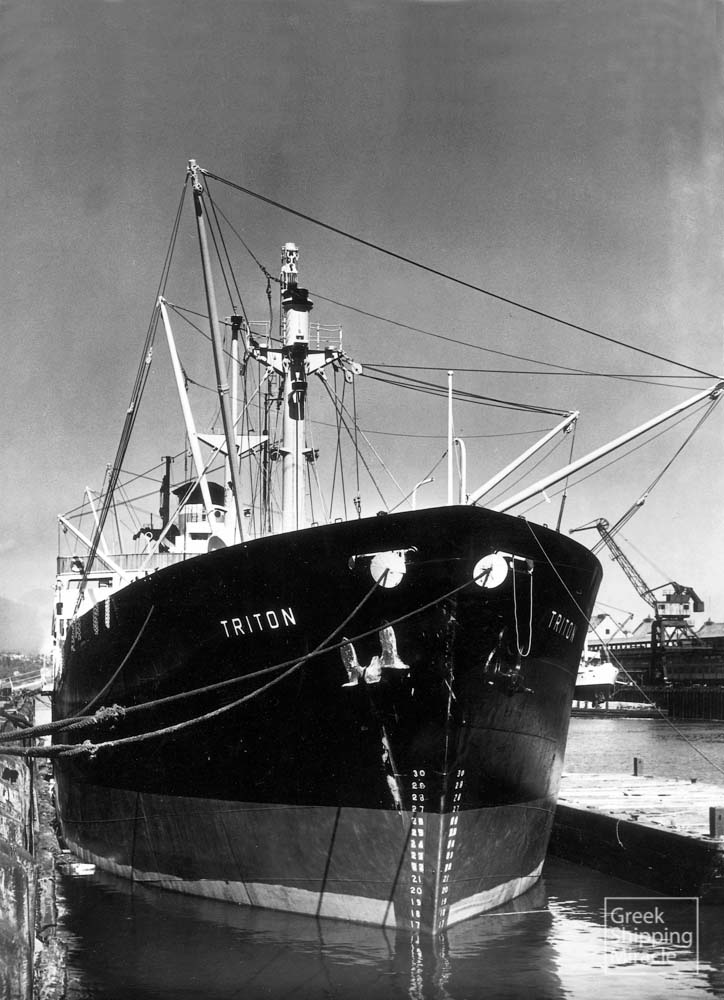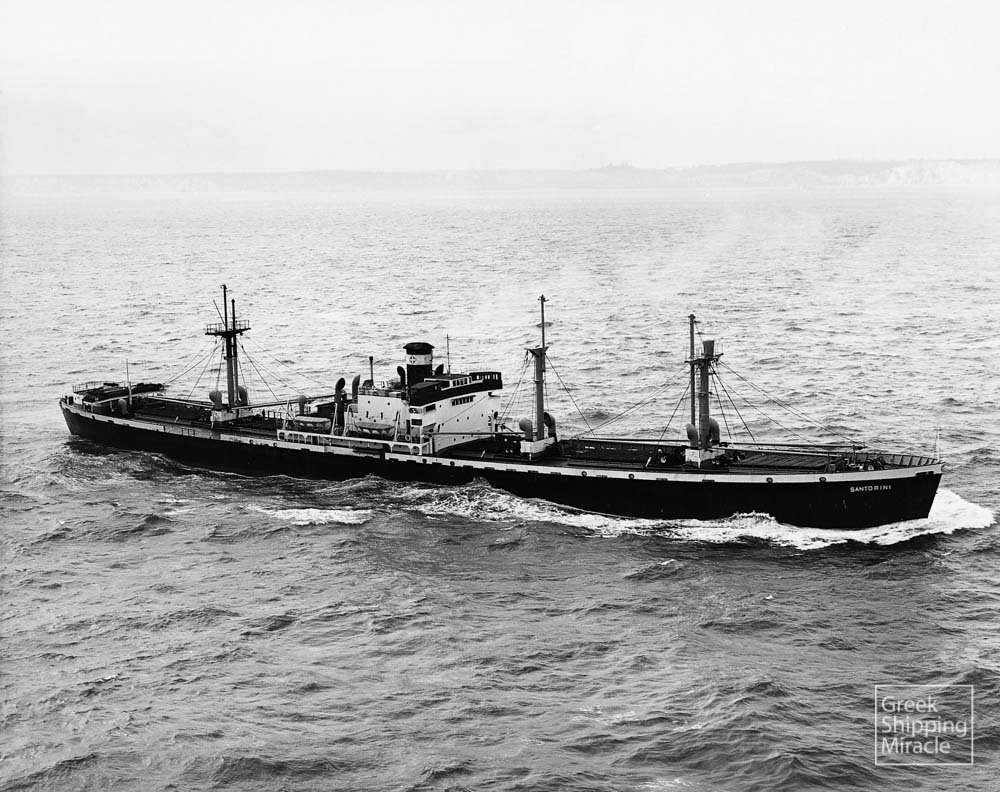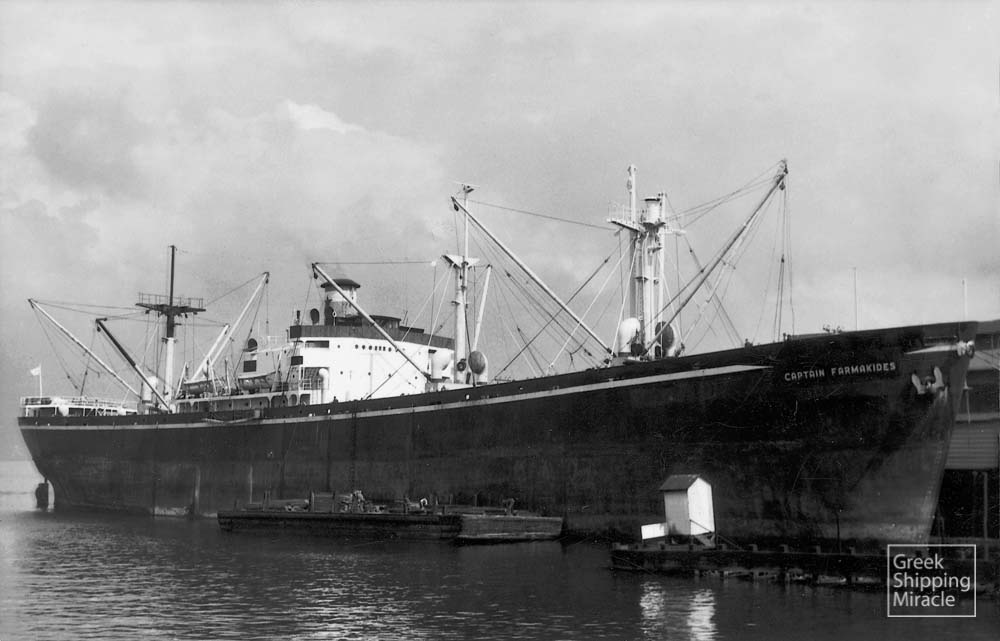THE FIRST GREEK LIBERTY SHIPS
Shortly after the end of World War II, 98 Liberty-type merchant ships were registered, almost en masse, under the Greek flag. These ships were sold by the United States government to Greek shipowners under the Merchant Ship Sales Act of 1946. Established a year after the end of the war, the act allowed the sale of US-flag ships to foreign countries in order to facilitate their maritime postwar reconstruction.
Of the 98 ships, 14 were already under the Greek flag, having raised the flag since as from their delivery from the shipyards they had been sailing under Greek management through a special agreement. Their sale to Greek interests together with the other 84 ships formed the foundation of the postwar reconstruction of the devastated Greek-flag fleet. The ships were acquired at a mean price of about $600,000 each, with 25% of this paid in cash by the individual owner and the remaining in installments over a long term at low interest rates –under the guarantee of the Greek government as requested by the sellers.
At same time, the evolution of the Greek-flag fleet faced major difficulties because of the extremely high operating costs of Greek ships and the unstable political situation in a country plagued by civil war. Though initially this made the operation of the Greek-flag Liberty ships expensive, their presence was a pillar for Greek shipping, as they offered the opportunity of immediate employment to over 4,000 Greek seafarers, who otherwise would have taken up other professions or, more likely, would have emigrated; an unfortunate but necessary choice for many Greeks at the time. Therefore, the acquisition of the 98 ships not only served as a nucleus for the reconstruction and the subsequent evolution of an impressively large fleet, but also became the life jacket for a profession in which Greeks have flourished many times over since antiquity: seafaring.
Thoughts concerning the postwar disposal of the Liberty ships, as well as other vessel types built by the US during the war, had been described in articles before the end of the war. In one of these, published in the British shipping magazine: Shipbuilding and Shipping Record in October 1944 (full text below*), reference was made to a corresponding article of the US shipping magazine: Marine Engineering and Shipping Review, which put forward the possible scenario of selling US war-built vessels to Greeks after the war. This scenario proved to be almost identical with the actual conditions of sale of the 98 ships to Greek interests in the second half of 1946, when Greek shipowners based in New York since the beginning of the war had no alternative but to ask their government to guarantee the loans for the vessels, as mentioned, a condition imposed by the US government. It was a fortuitous coincidence the vice president of the government of Constantine Tsaldaris was Sofoklis Venizelos, who had an excellent knowledge of maritime issues, while the Minister of Merchant Marine was Nicolaos Avraam, an experienced open-minded politician. Both men fully appreciated that the mass acquisition of these ships was in the national interest and worked hard, especially Avraam, to ensure the successful outcome of this effort.
Between December 1946 and April 1947, the 98 Liberty ships, along with two smaller cargo liners built as the CI-M-AVI type, were acquired and delivered to Greek interests, marking the start of one of the most important and interesting chapters in modern Greek maritime history, the legend of the 100 Liberty ships.
GREEK SHIPPING
America casts eyes on the Greek market and says:
“Someone is going to sell ships to the Greeks and it might as well be the United States”
Our New York contemporary, Marine Engineering & Shipping Review, has commenced a series of articles analysing the distribution of the world’s shipping. It is pointed out that with the United States now owning the major part of the world’s merchant tonnage and Germany and Japan out of the running, there is naturally considerable speculation as to the probable distribution of the world’s shipping after the war. An analysis of the Greek merchant marine is the first of the series of articles based on statistical research.
In this article it is pointed out that approximately 80% of the Greek merchant marine has been sunk. More than 425 vessels have been lost, including 360 freighters, two Mediterranean passenger ships, and 63 small coastal passenger vessels. Proportionately the Greek merchant marine has probably suffered a greater loss than any of the Allied Nations. This was also the situation in the first world war when Greece lost a big percentage of its merchant tonnage. In the years 1915 throughout 1918 a total of 161 vessels of 415,230 gross tons were lost.
The article then goes on: “Most of the Greek ships have been lost while in war service, as since October 28, 1940, the date of the Italian attack on Greece, Greek shipping requisitioned by the Government was placed in its entirety under charter in the service of the British Ministry of War Transport. About 95 vessels still remain under the Greek flag. These include 90 cargo ships, four Mediterranean passenger ships and one transatlantic passenger liner. The latter is the Nea Hellas, built in 1922, and engaged in the New York-Piraeus run in pre-war days. While serving the Allies as a troop transport the vessel was torpedoed, but was kept afloat and repaired. Six vessels were recently sold to the Greeks by Great Britain under the British allied replacement scheme. More recently the Maritime Commission and War Shipping Administration allocated two Liberty ships to the Greeks under bareboat charter.
“Among the more valuable and better known vessels sunk were the Themoni, lost in the battle of Crete, a modern cargo ship constructed in 1938, of about 5,000 gross tons; also the Ellin, a new cargo ship of 8,960 dw tons.
“At the start of the war in Europe the Greek nation ranked ninth among the maritime nations of the world from the standpoint of size of its ocean-going merchant fleet — vessels over 2,000 gross tons. Her merchant marine totalled 334 vessels of 1,500,700 gross tons with a deadweight carrying capacity of 2,251,050 tons. Of this fleet 326 ships of 1,450,854 gross tons were cargo carriers, making Greece the seventh largest operator of cargo ships in the world. The balance consisted of six tankers of 28,976 gross tons and two combination passenger and cargo ships of 20,870 gross tons. At that time the Greeks controlled 3.5 per cent of the world total of 9,161 merchant ships and 2.9 per cent of the world gross tonnage of 51,988,076 tons.
“The Greek merchant marine, however, had a very high average age. In 1939, some 67 per cent of its fleet were over 20 years of age, 225 vessels having been constructed prior to 1919 and 109 in or after 1919. Among its more modern ships were three constructed in 1939, 10 in 1938, four in 1937 and three in 1936. All of these new ships were built in Great Britain for the Greeks, totalling 101,628 gross tons.
“A good percentage of the Greek merchant ships were rather large, 119 of 534,765 tons being between 4,000 and 5,000 gross tons; 76 were between 5,000 and 6,000 gross tons; 24 were between 6,000 and 7,000 gross tons; one of 16,991 gross tons; the balance of 114 being between 2,000 and 4,000 gross tons. Most of these vessels were of slow speeds, 312 operating at under 12 knots; 19 at 12 knots; two at 13 knots; and one at 16 knots. Of the vessels, 325 were propelled by reciprocating engines, six by turbines and three by internal-combustion engines. Of the 331 steam-propelled vessels 330 were equipped with Scotch boilers and of these 277 burned coal and 53 used oil as fuel. Only one ship had watertube boilers, this one burning oil.
“Unlike other great maritime nations, the Greeks did not own and operate a tanker fleet, nor was it a factor in passenger transportation, most of its passenger ships being small and operating only in the Mediterranean.
“Including all merchant vessels of 100 gross tons and over, in 1939 Greece had 607 vessels of 1,780,666 gross tons. About 10 per cent of these vessels were diesel propelled. In the same period the United States had 2,958 vessels of 11,490,177 gross tons. Approximately 20 per cent of this total was diesel propelled.”
Statistical data in the article show that compared to the rest of the world the Greeks have controlled a comparatively large portion of the merchant ships since the turn of the century. A steady increase of tonnage continued from 1905 up to 1916. However, due to the serious losses incurred during World War I the Greek Merchant Marine was reduced in size to a level existing at about 1900. A very rapid growth took place in the years immediately following the war. By 1925 the Greeks had again established themselves on the high seas, controlling a fleet greater in size than they had ever owned previously. By the acquisition of a great many secondhand ships the fleet continued to expand in size until in 1938, the last normal trading year before the war, there were 638 merchant vessels of 100 gross tons and over flying the Greek flag, representing a tonnage of 1,780,666 gross tons.
Prior to the entire dislocation of world commercial trade by the outbreak of war in Europe in 1939 the Greek merchant fleet – vessels over 2,000 gross tons – was almost entirely engaged in tramp trades between foreign ports. The composition of this fleet was such that economically it could afford important competition to any seafaring nation. The greater percentage of the vessels were old and had been acquired secondhand at a cost which did not offer serious difficulties in writing off the investment in a comparatively short time. The initial investment being low, the fact that the vessels were not modern in every respect, the cargo handling equipment being somewhat antiquated and the propulsion machinery uneconomical, did not mitigate against the success of their ventures. Wages and subsistence were not important factors in the operation of the vessels. Generally speaking, little was spent on maintenance and upkeep.
Approximately 325 of these Greek ships operated in transoceanic trades between foreign ports. Compared with this, the United States had a fleet of 802 cargo ships of 4,072,701 gross tons, only 213 of which of 1,177,905 gross tons were engaged in foreign trades. However, the United States did have in addition 75 combination passenger and cargo ships of 682,623 gross tons employed in foreign trades.
“If upon the cessation of hostilities in Europe” the writer goes on, “the Greek nation again turns to the sea and is able to acquire a fleet in composition equal to what she had before the war, becoming an important factor in the transportation of the world’s goods, then the United States can abandon all hopes and plans for embarking upon tramp shipping. Certainly the Greek nation will be in no position financially to construct new modern and highly competitive vessels. According to all information, the land and the people have been stripped of all valuables by the Germans and after the war all efforts will have to be devoted to the restoration of towns, ports and industries.
“What limited Greek resources exist outside of the country will not enable the Greeks to purchase many vessels and no doubt the policy will be to acquire secondhand ships similar to the procedure followed in previous years. Merchant shipping was one of the important cogs in the economic structure of the Greek nation and will probably once again be just as necessary. Its merchant marine contributed materially to the need of foreign exchange, enabling the nation to offset its adverse balance of trade.
“If the nations of Europe and the United States combined to assist the Greeks to become self-sustaining, especially throughout the establishment of a merchant marine, it can be done only at a sacrifice to such nations. The United States has, of necessity, constructed a tremendous merchant marine, far greater in size than ever employed in normal peace years. If the United States should decide to keep most of these vessels employed in the post-period and become the leading carrier of the world’s goods, it will mean Greece will have to turn to other trades in order to restore her national economy.
“In the meantime, throughout the agency of the United Greek Shipowners Corporation, New York Committee the Greeks are endeavouring to re-establish their merchant marine. The British have sold old tonnage to them in the midst of the war.
“For many years the Greeks have been probably the best customer Great Britain has had as an outlet for secondhand ships. The British evidently did not fear the brand of competition they were setting up.
“If the United States is not going to operate the Liberty ships, or its pre-war built cargo ships, why not secure this market now for ourselves. To restore the Greek merchant marine to its previous size would require the addition of approximately 400 vessels. While the Greeks probably could not purchase these vessels from us at cost, we could sell this class of vessel to them on a 20-year mortgage basis. This would give us legal control of the vessels in case of another war, and would return to us some of our huge war expenditures.
“Someone is going to sell ships to the Greeks and it might as well be the United States. Greece does not have shipyards in which to construct its own tonnage, nor does it have the physical resources.
“If we move quickly we can secure this market for our surplus tonnage, and other markets will follow.”
